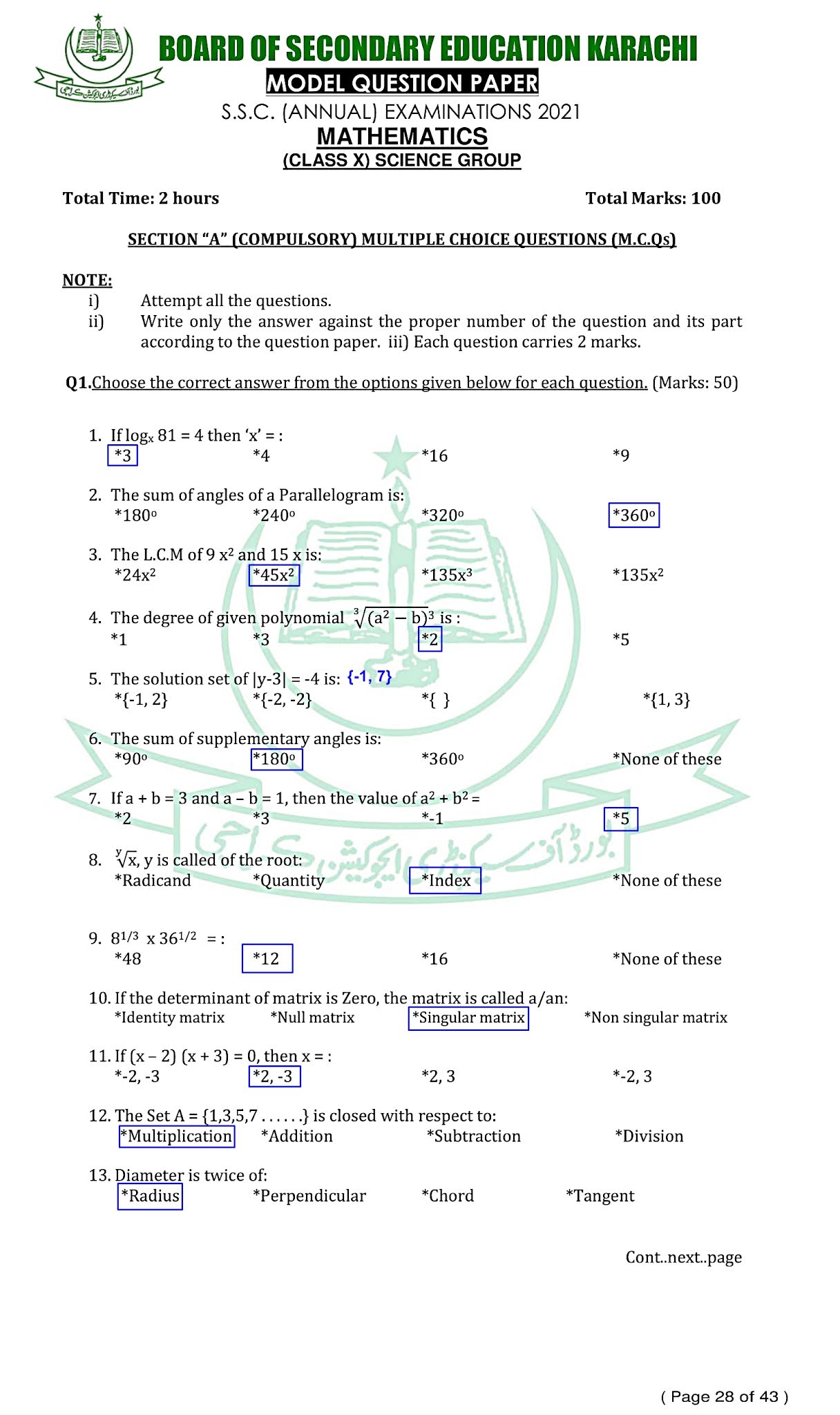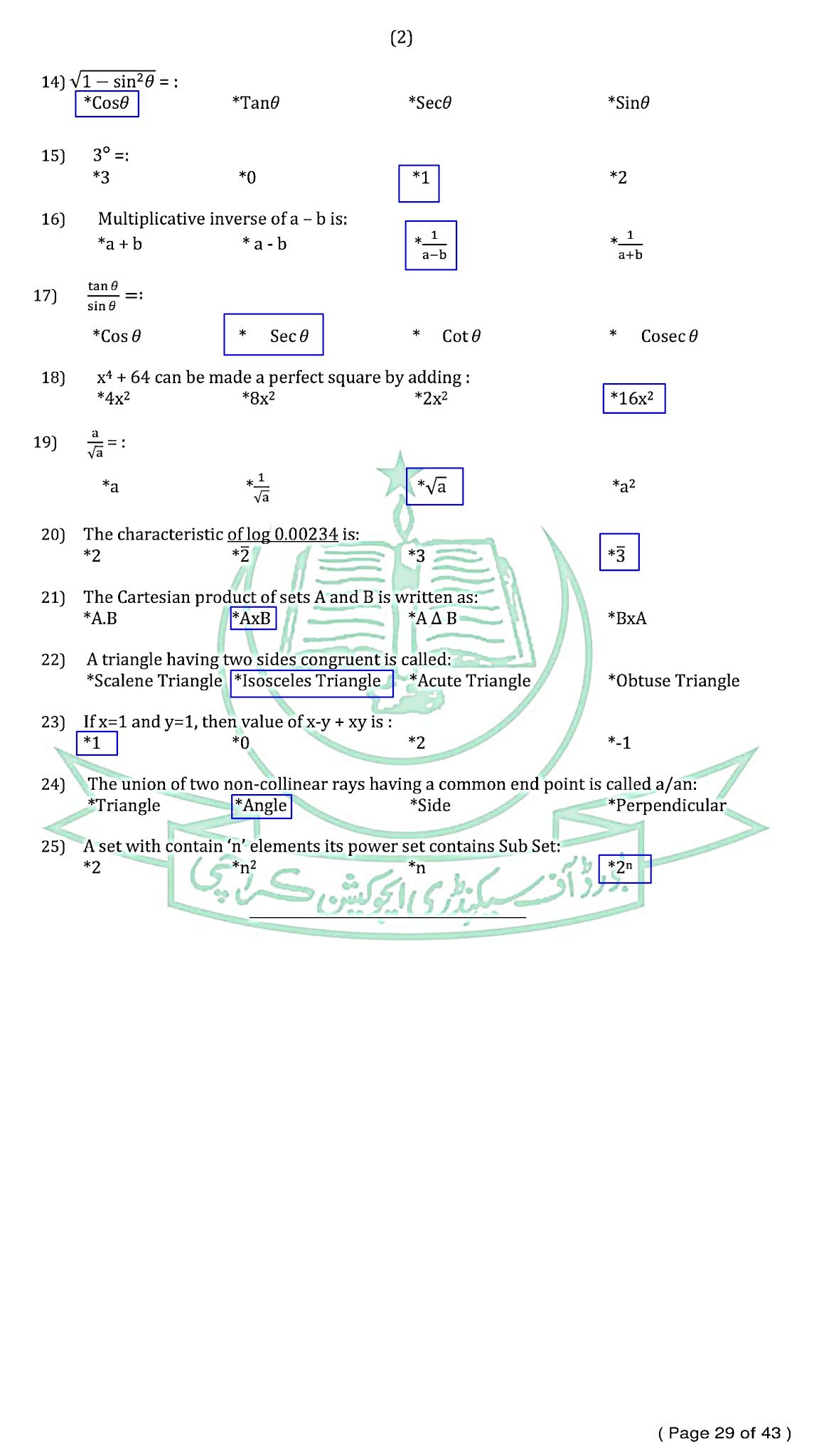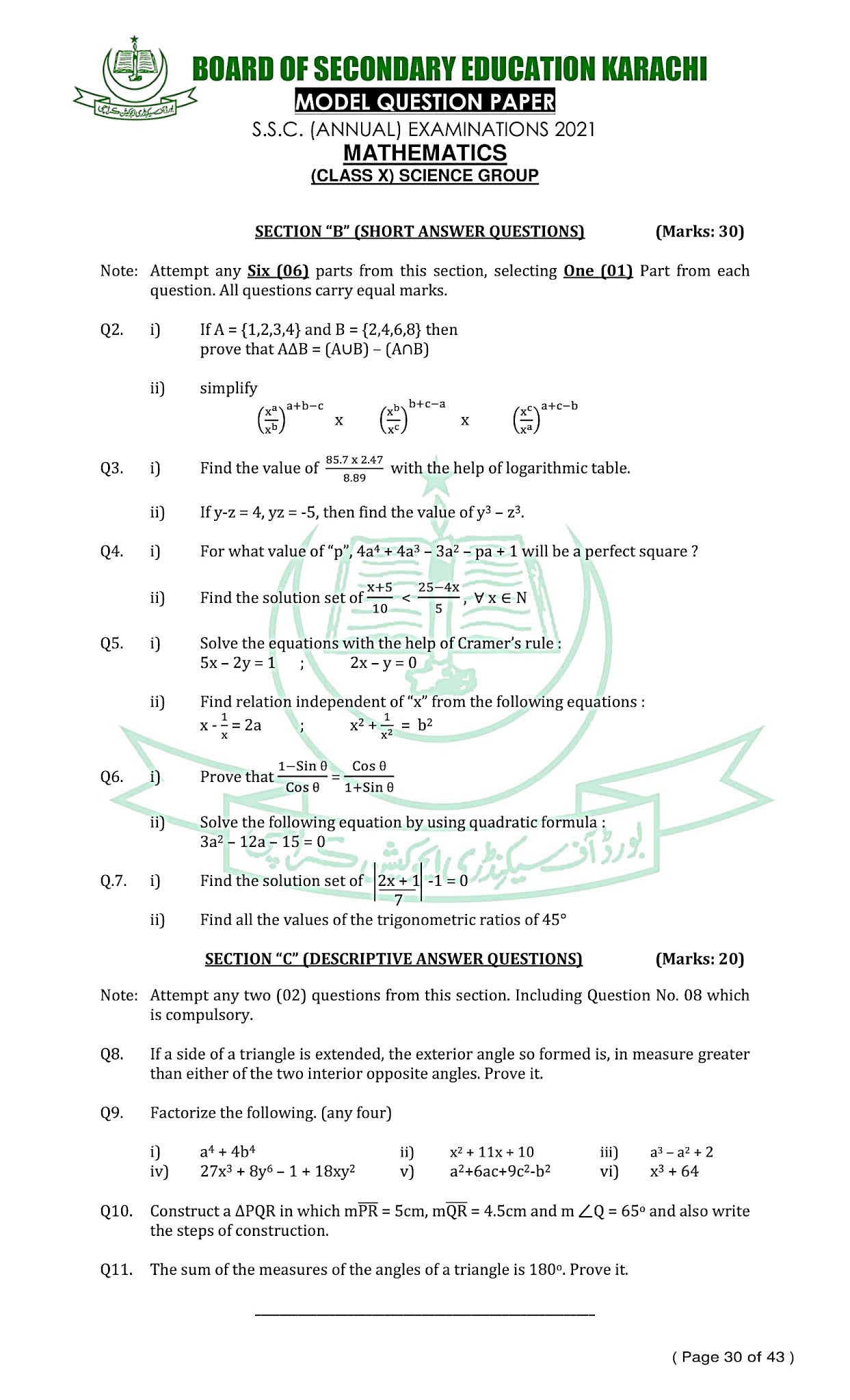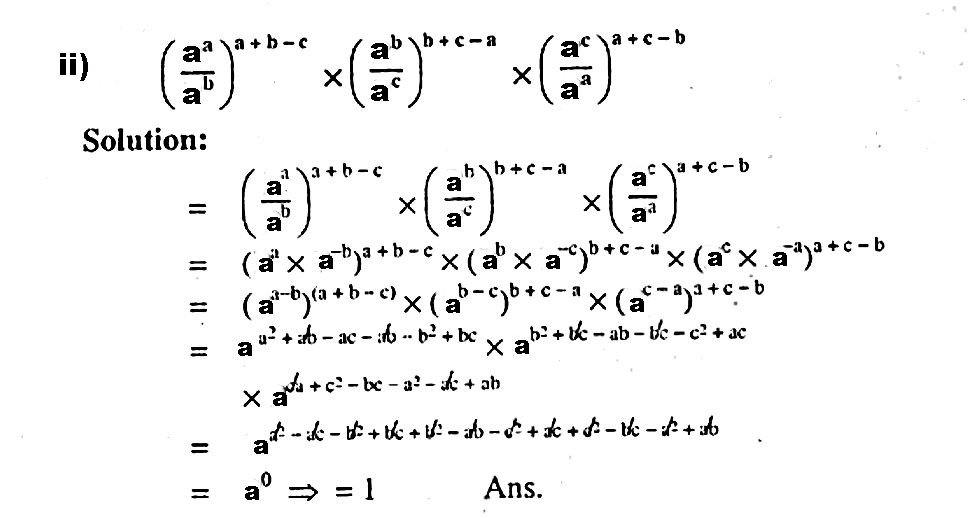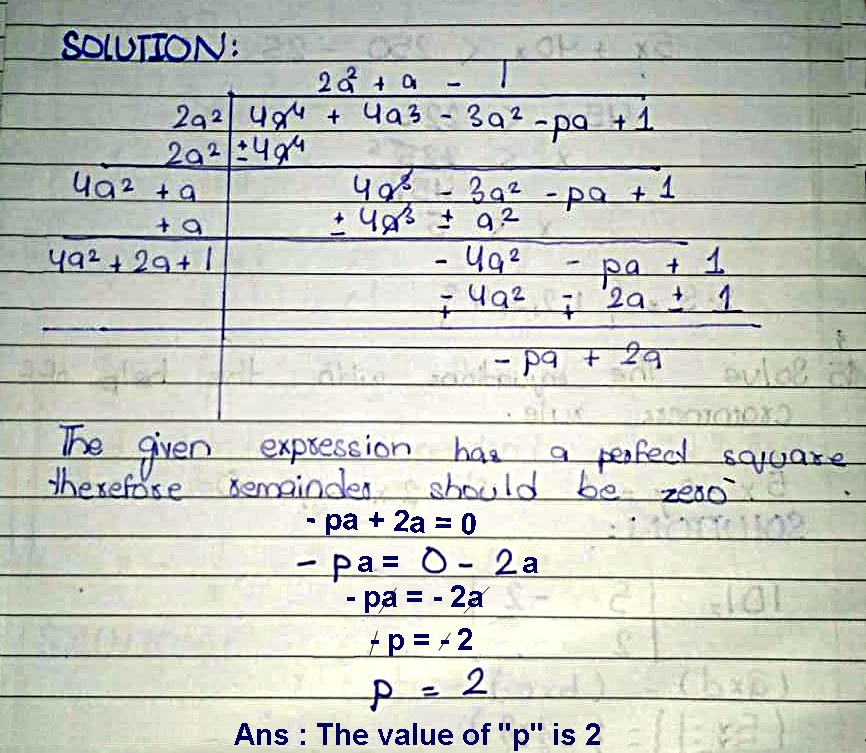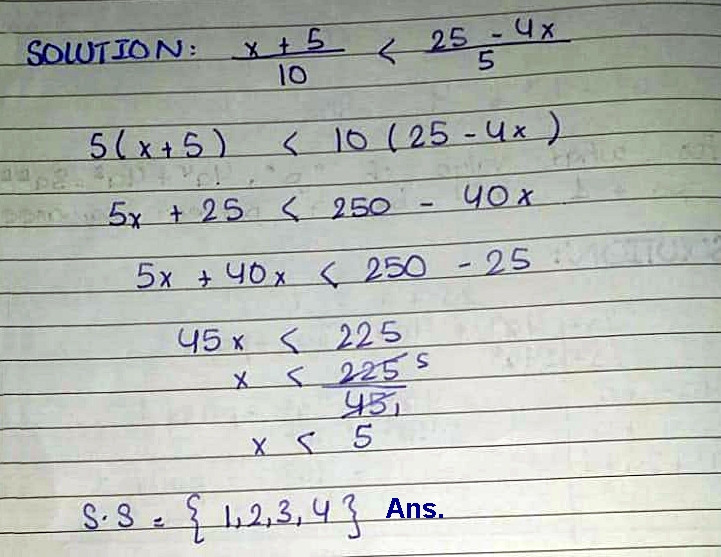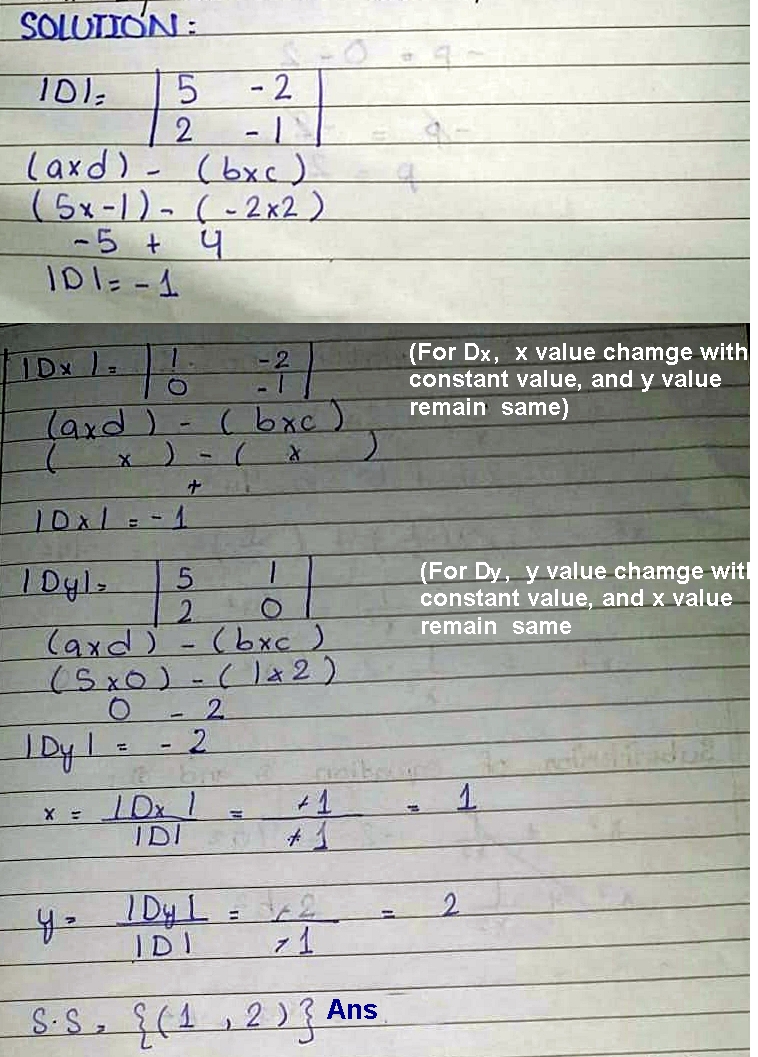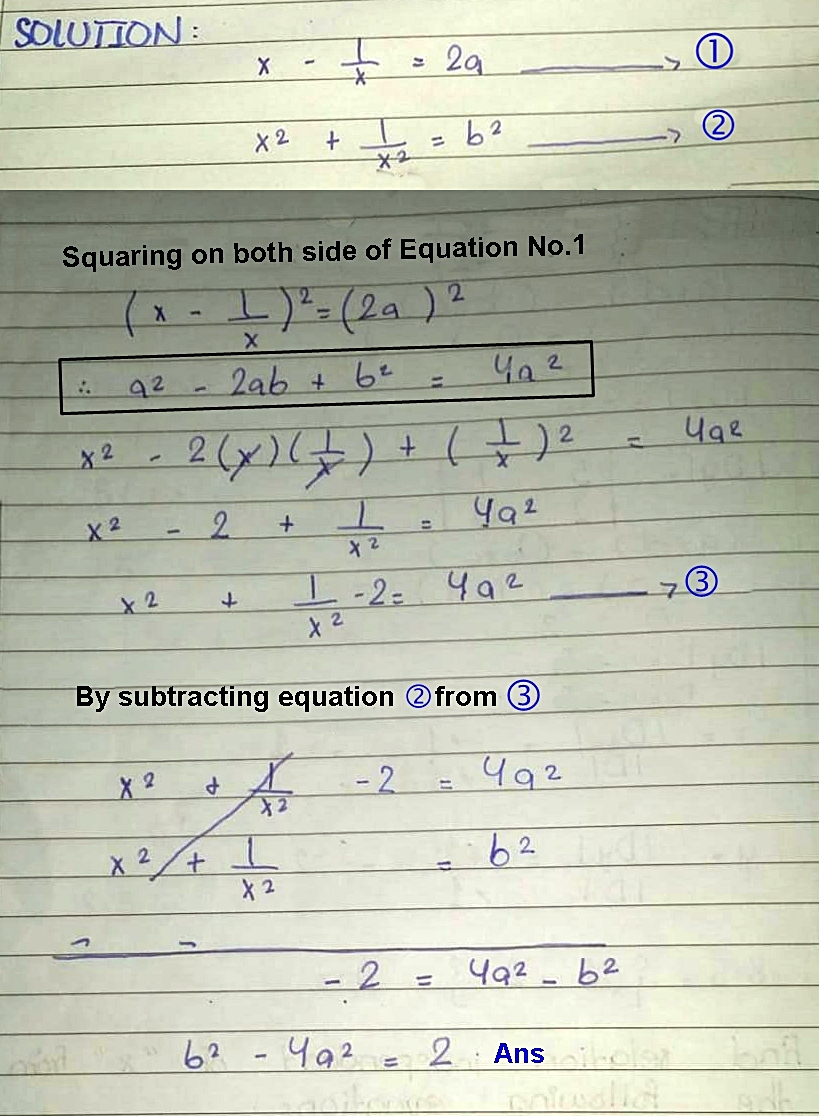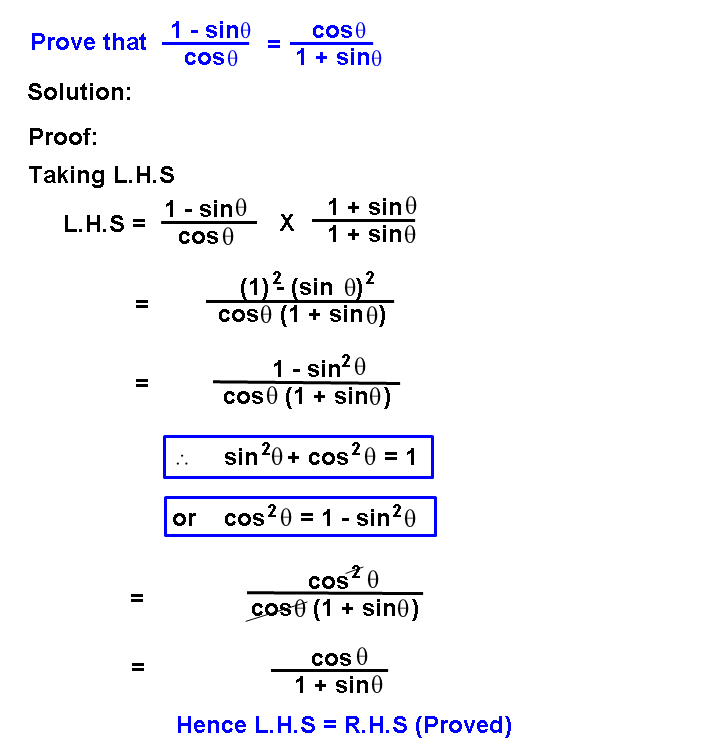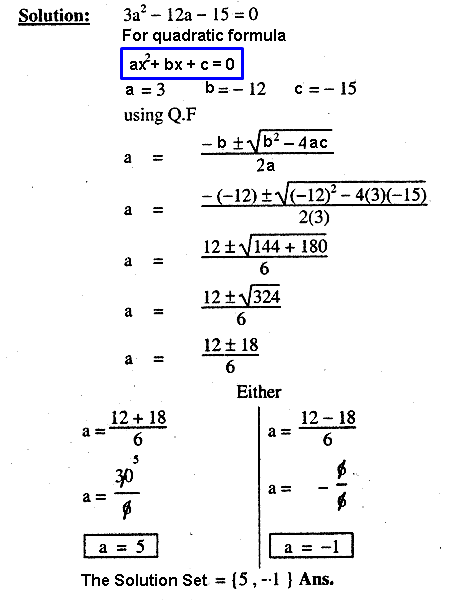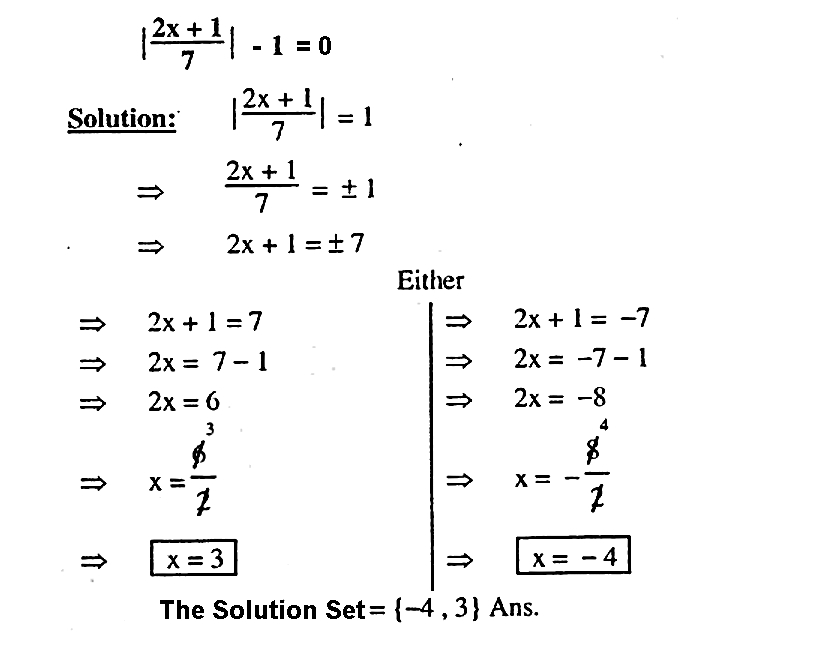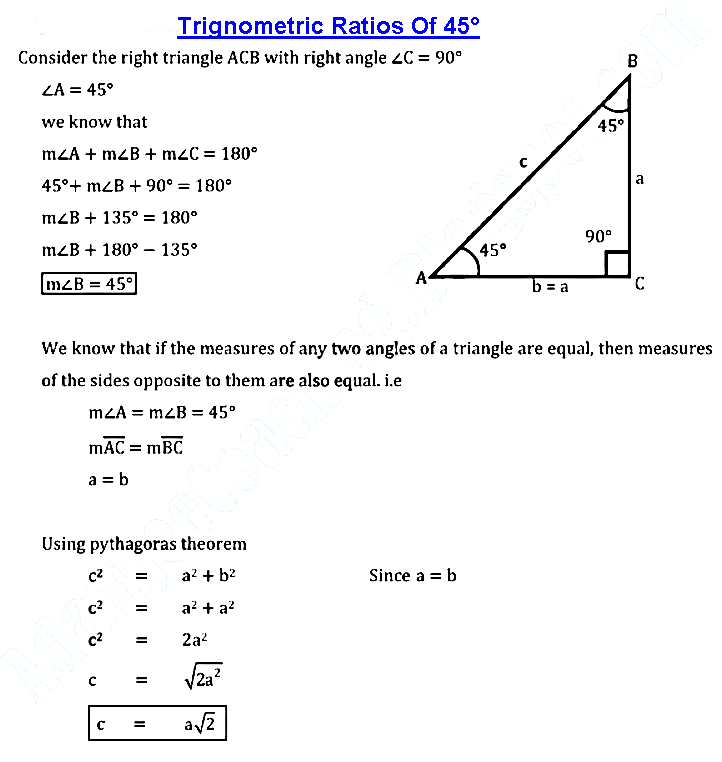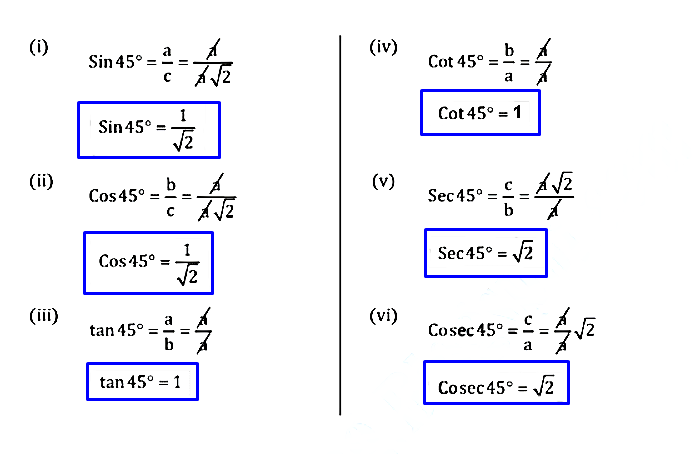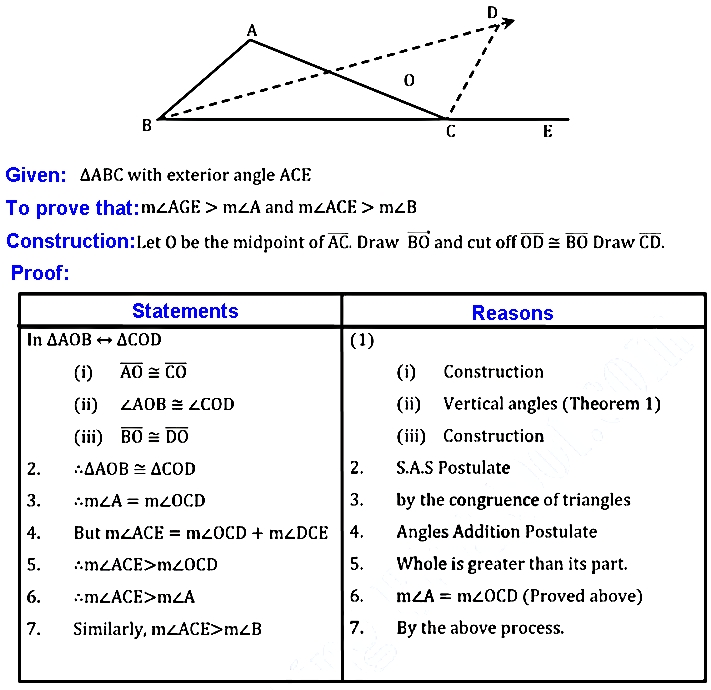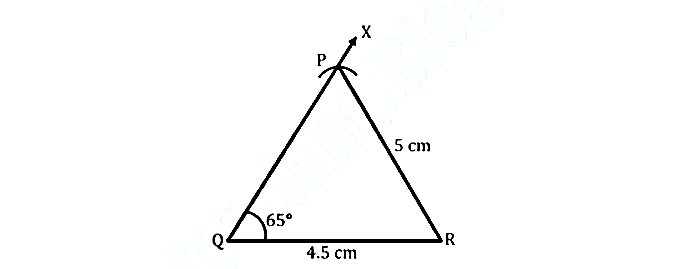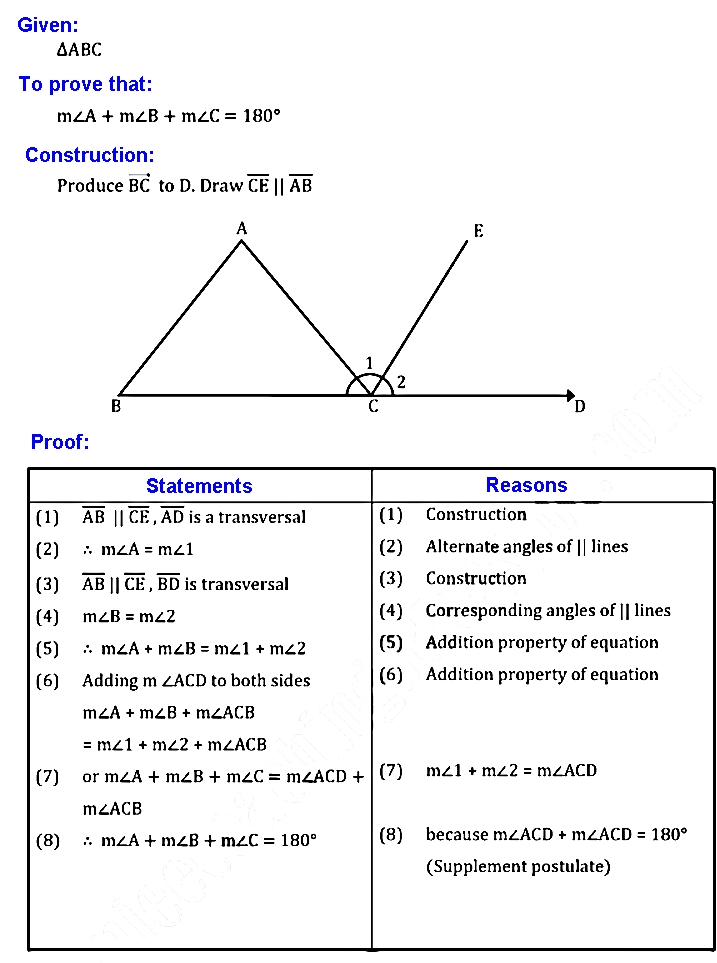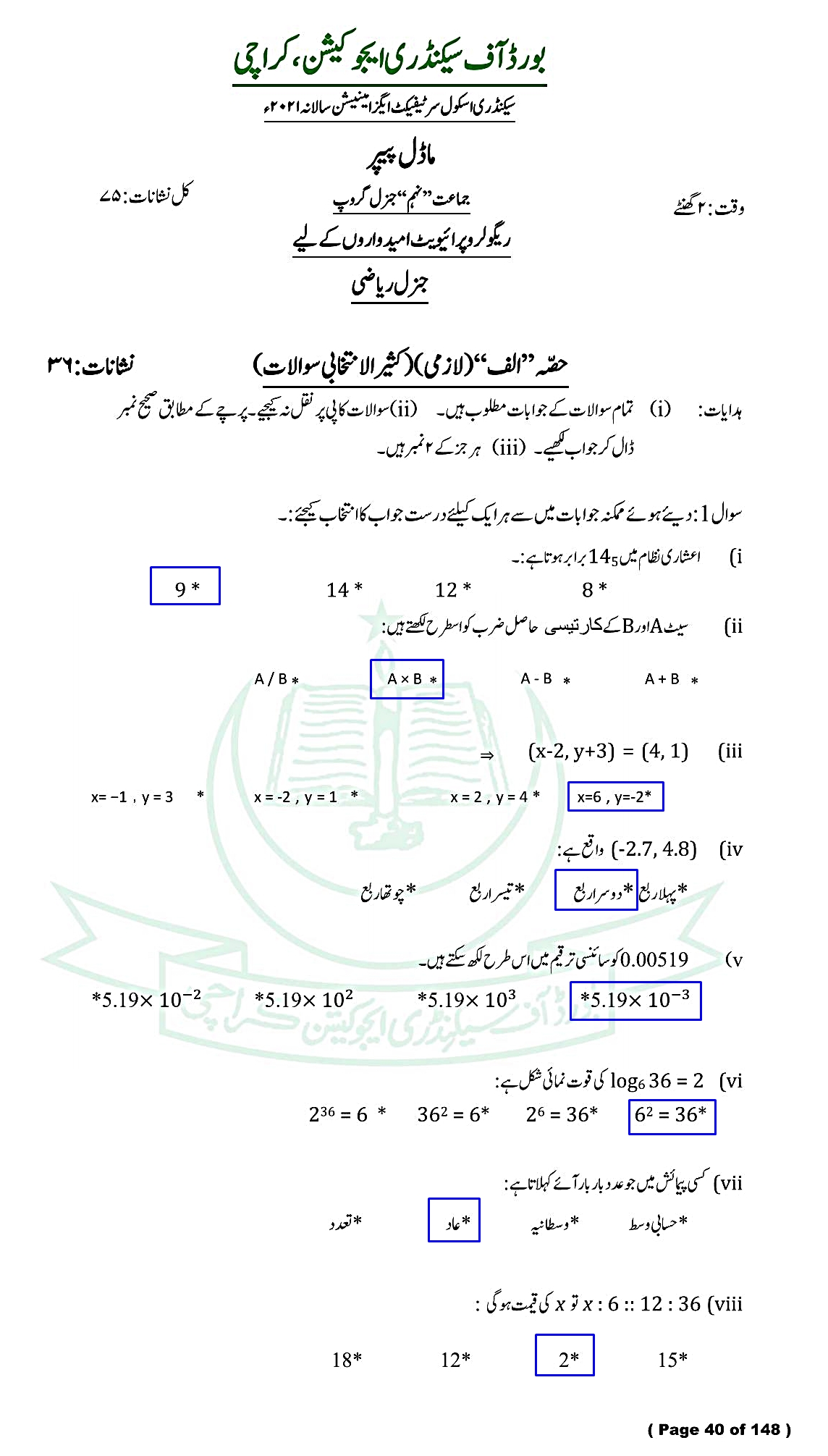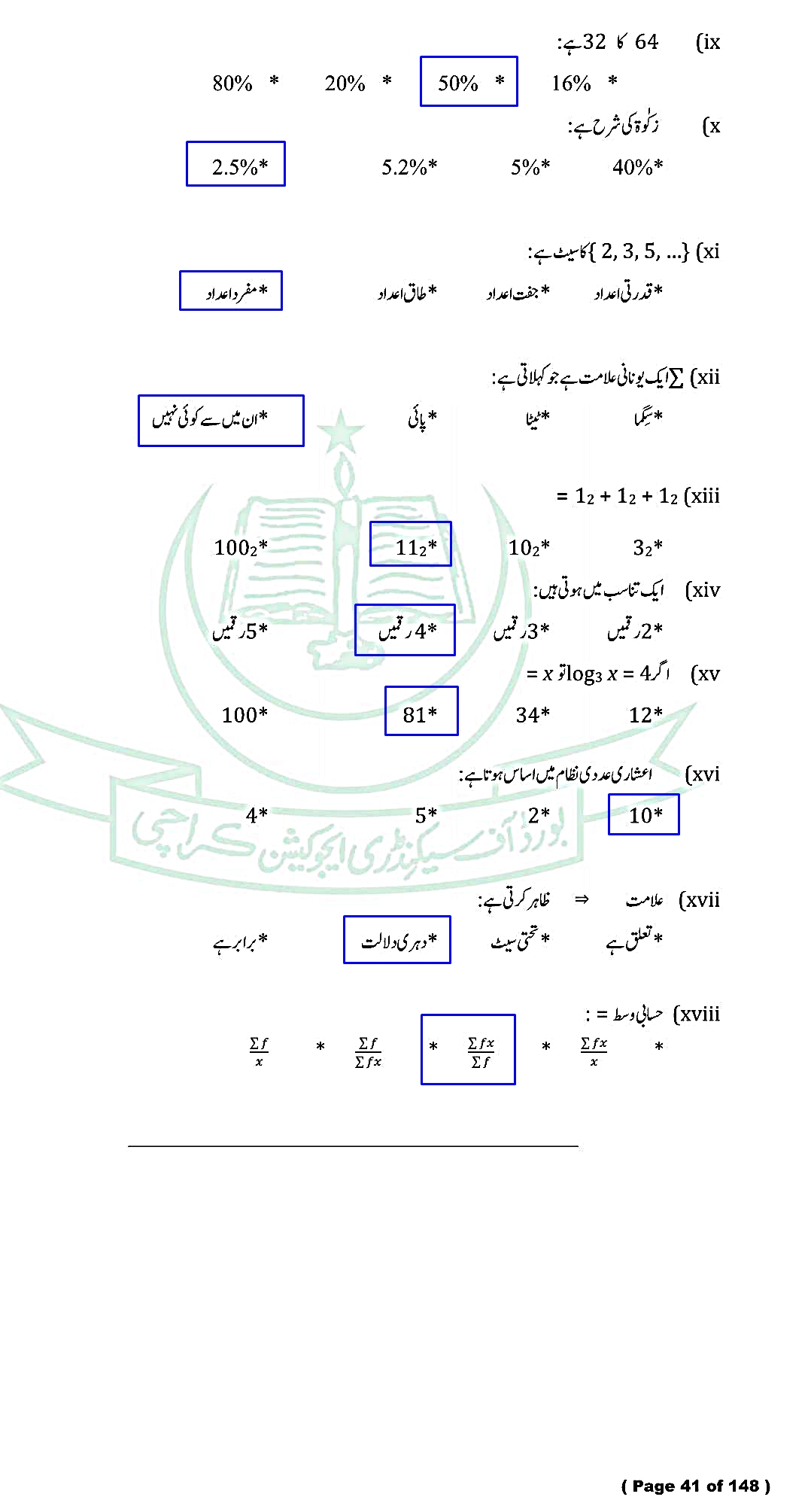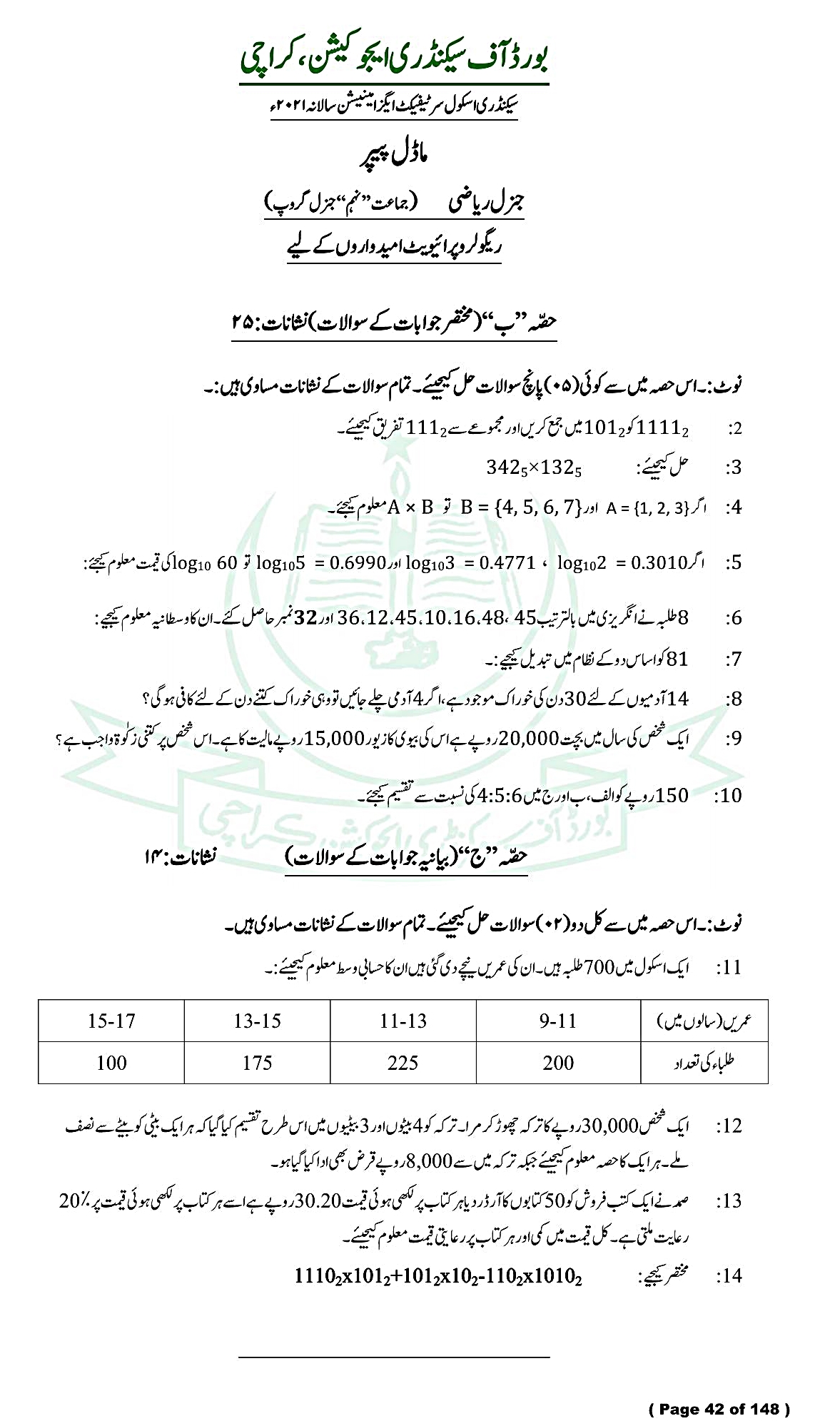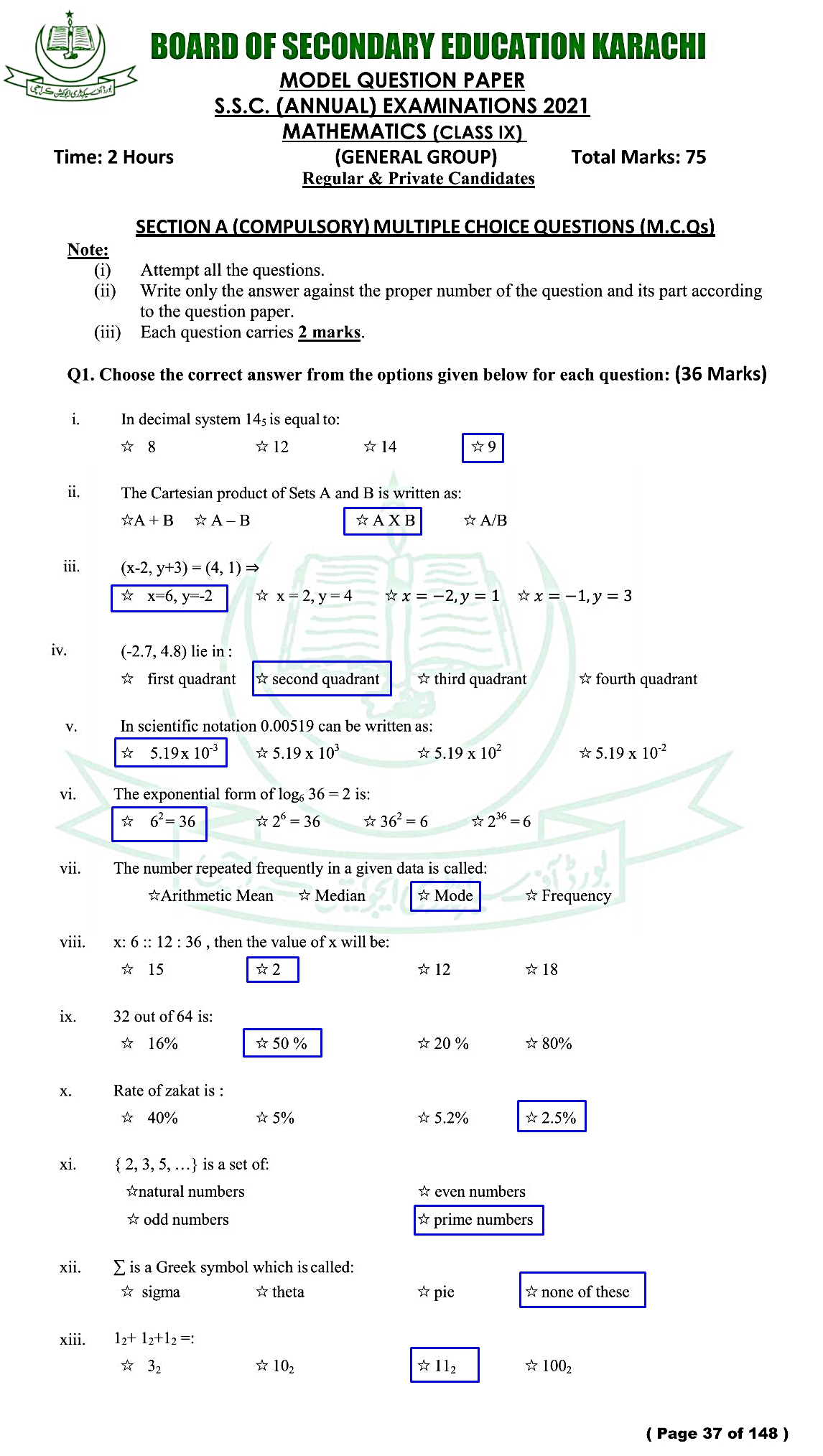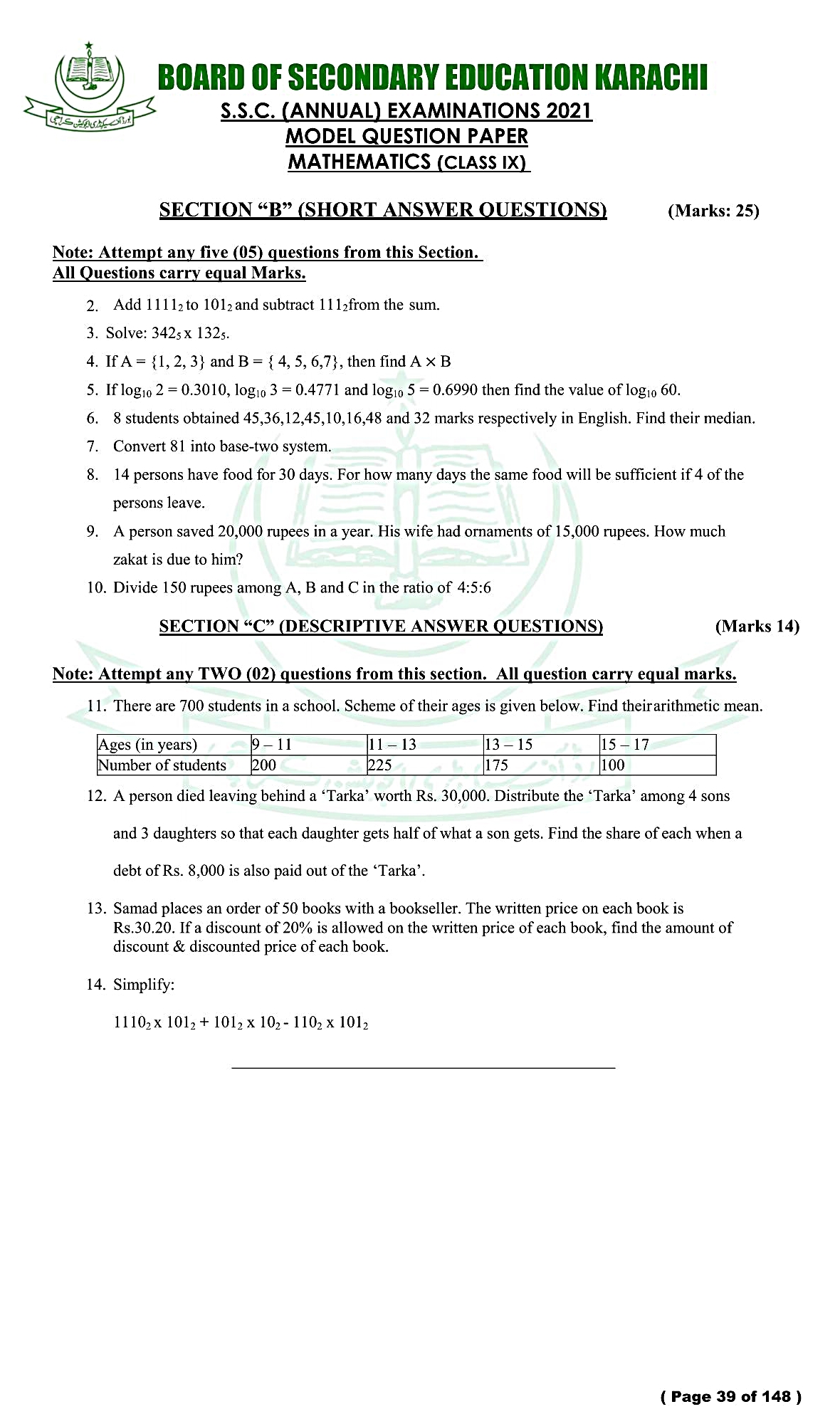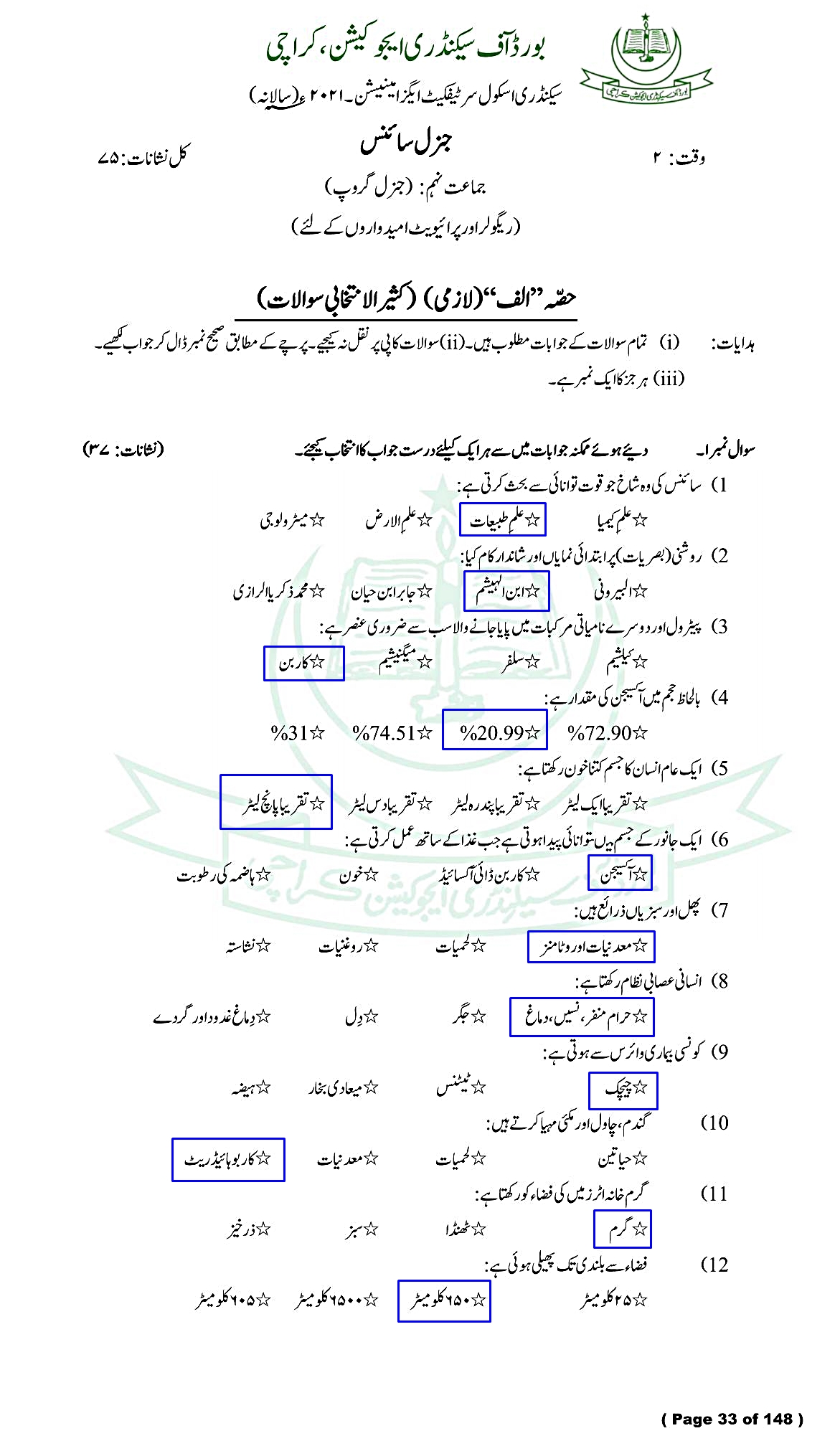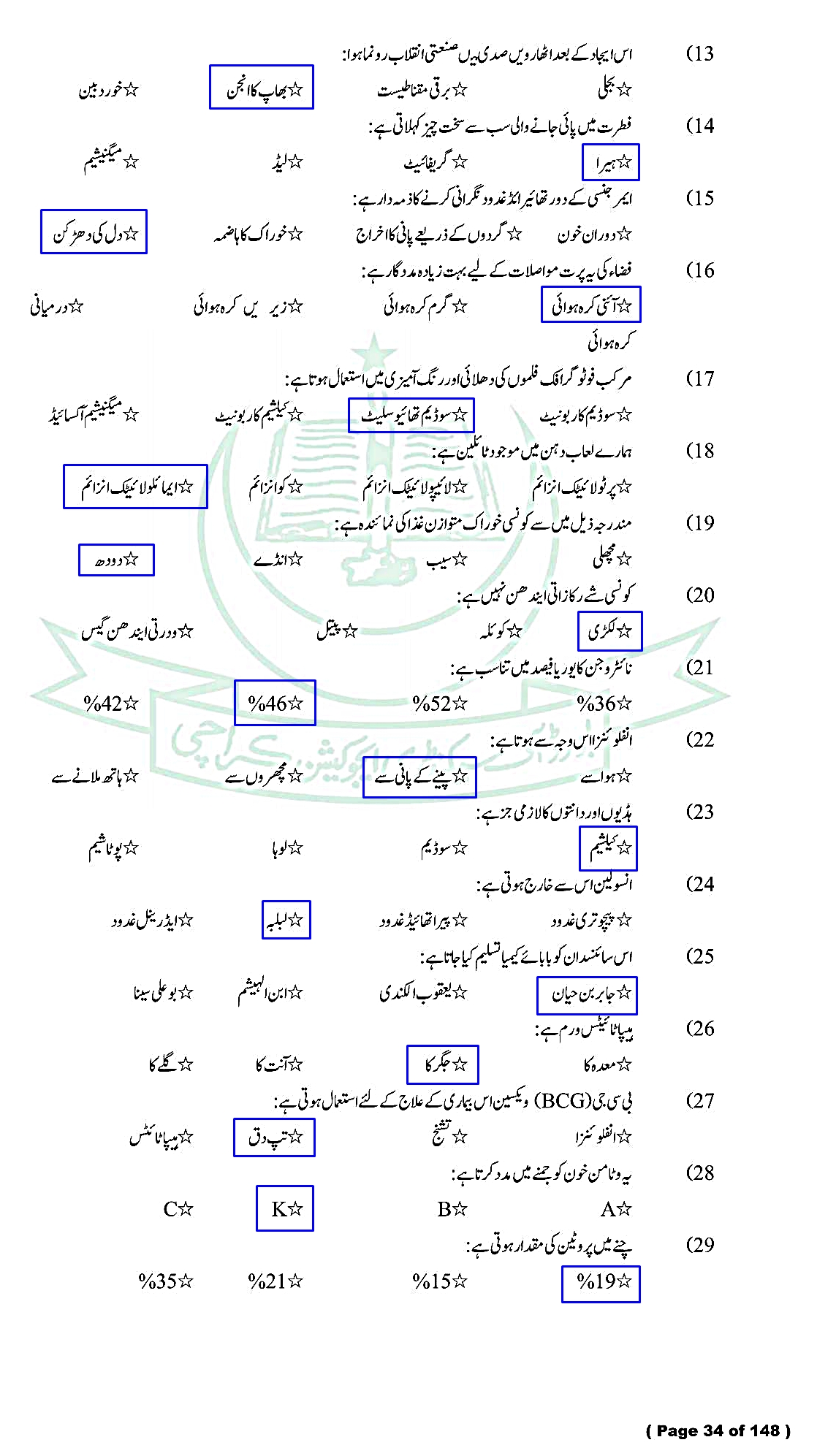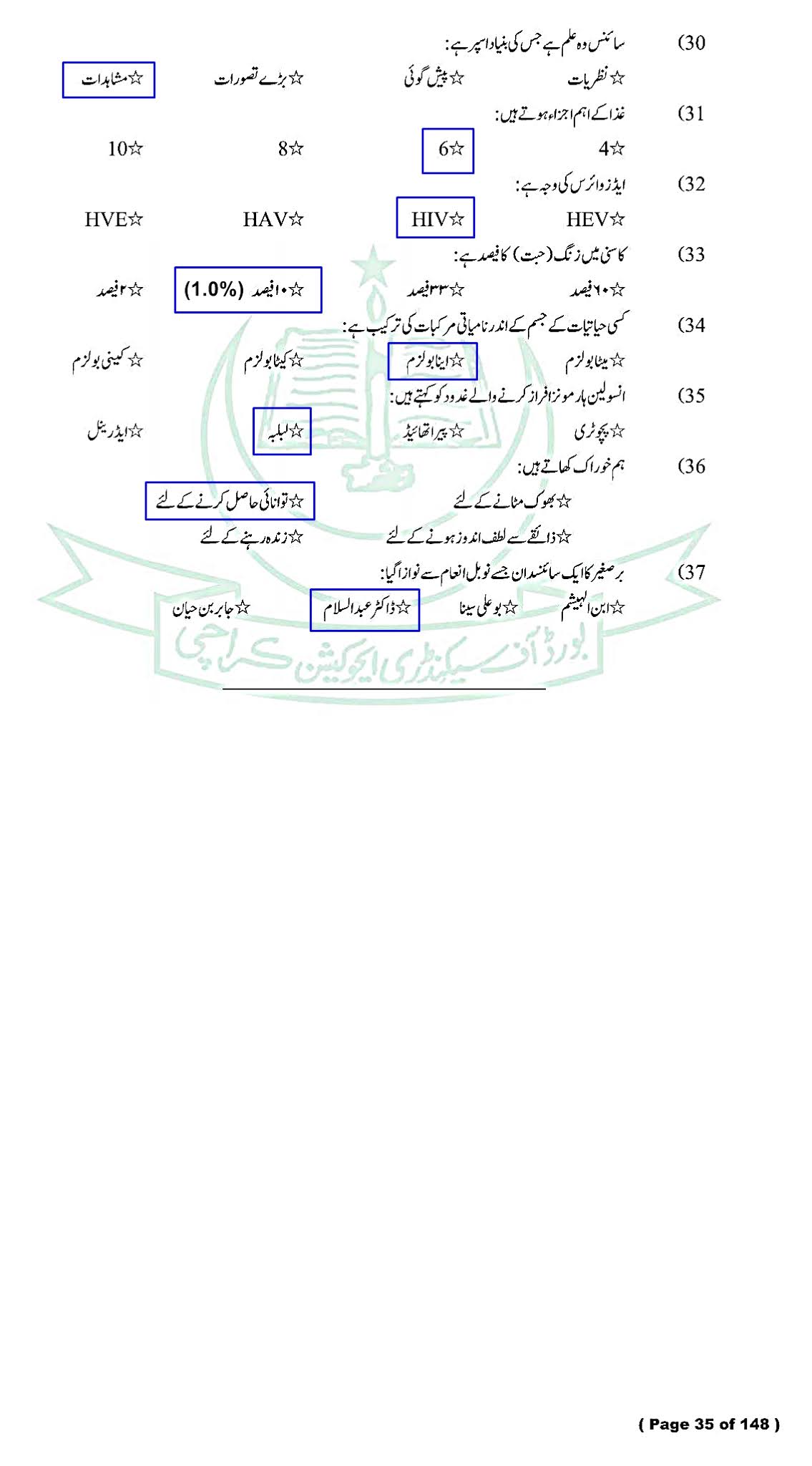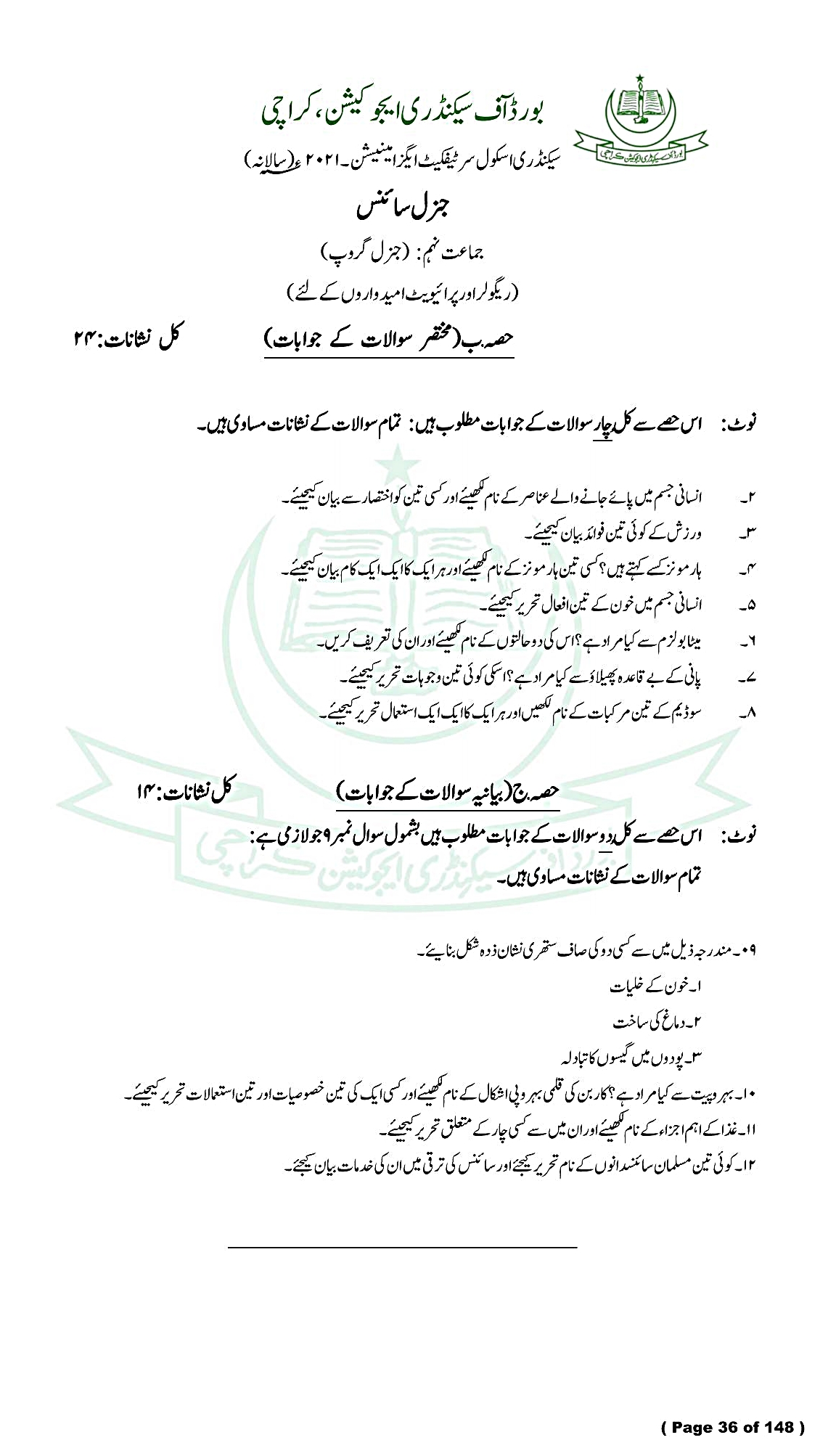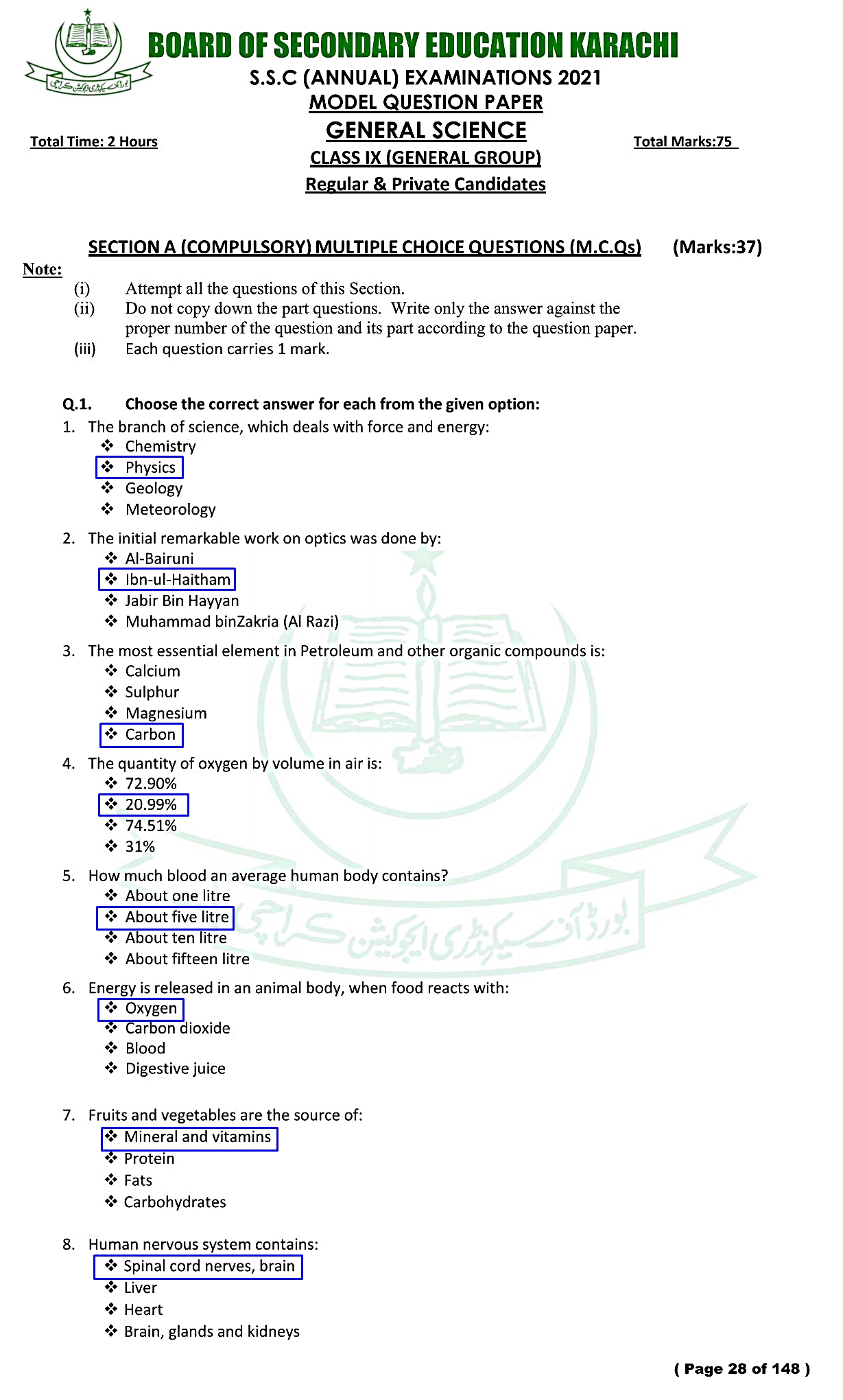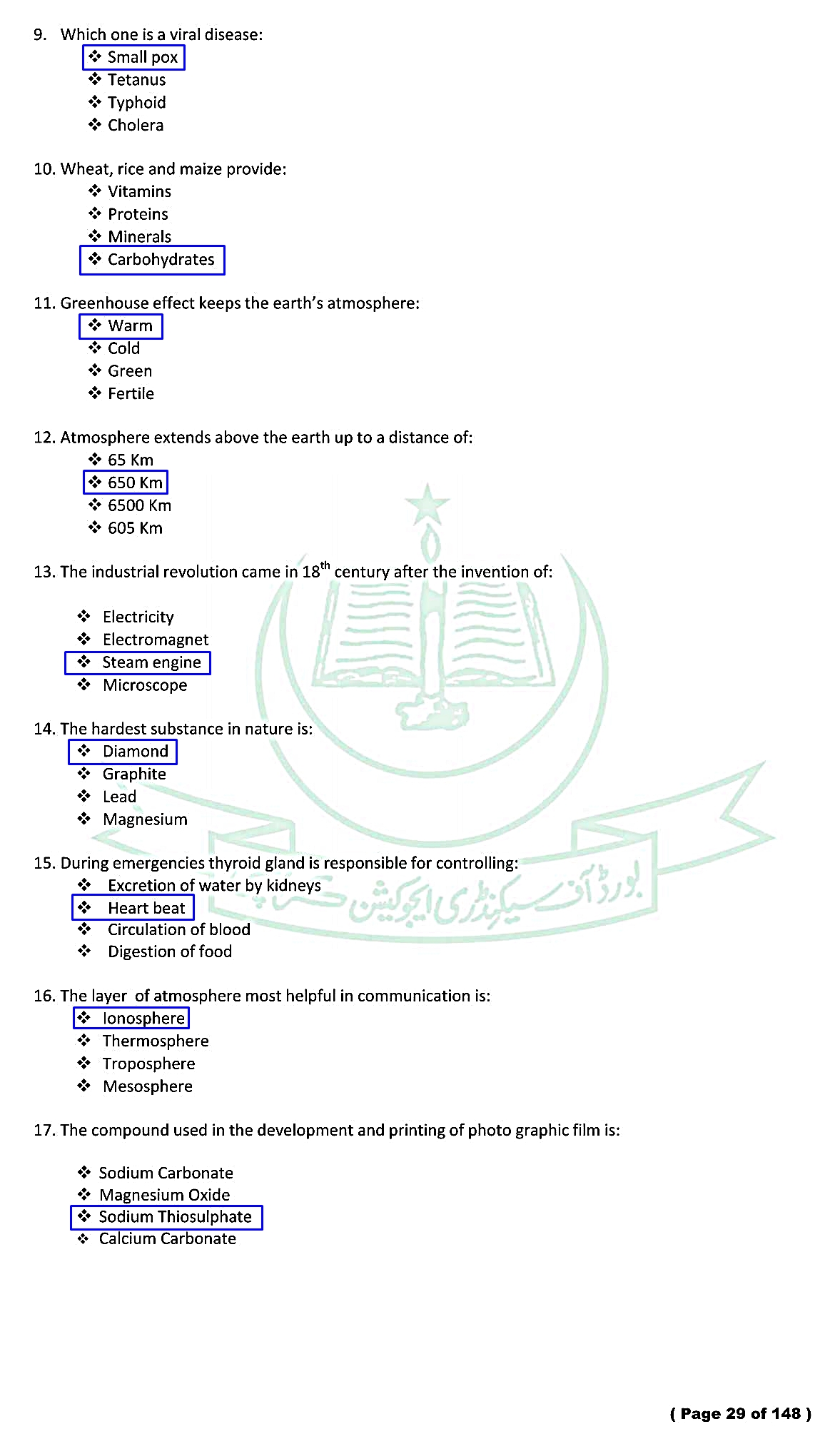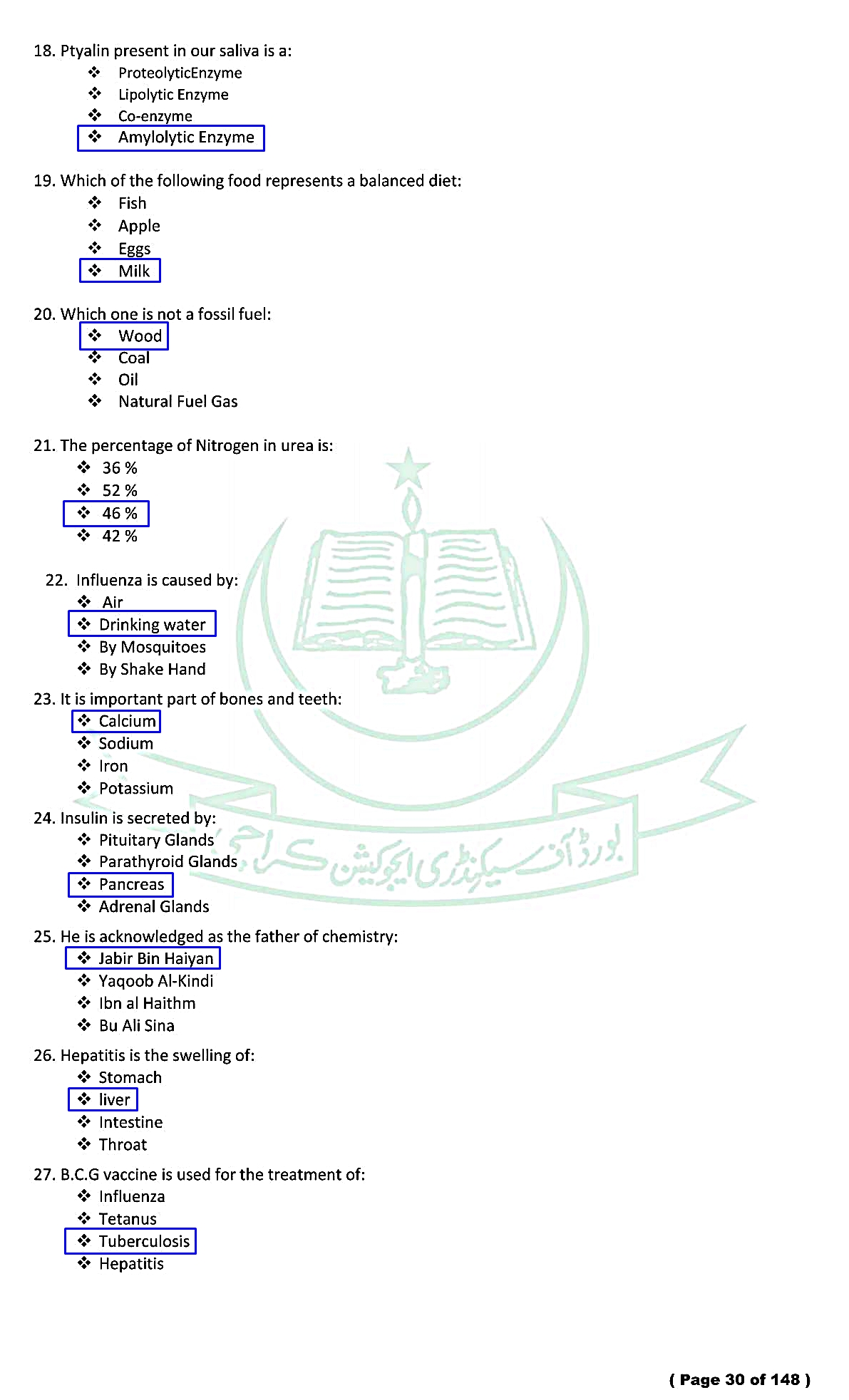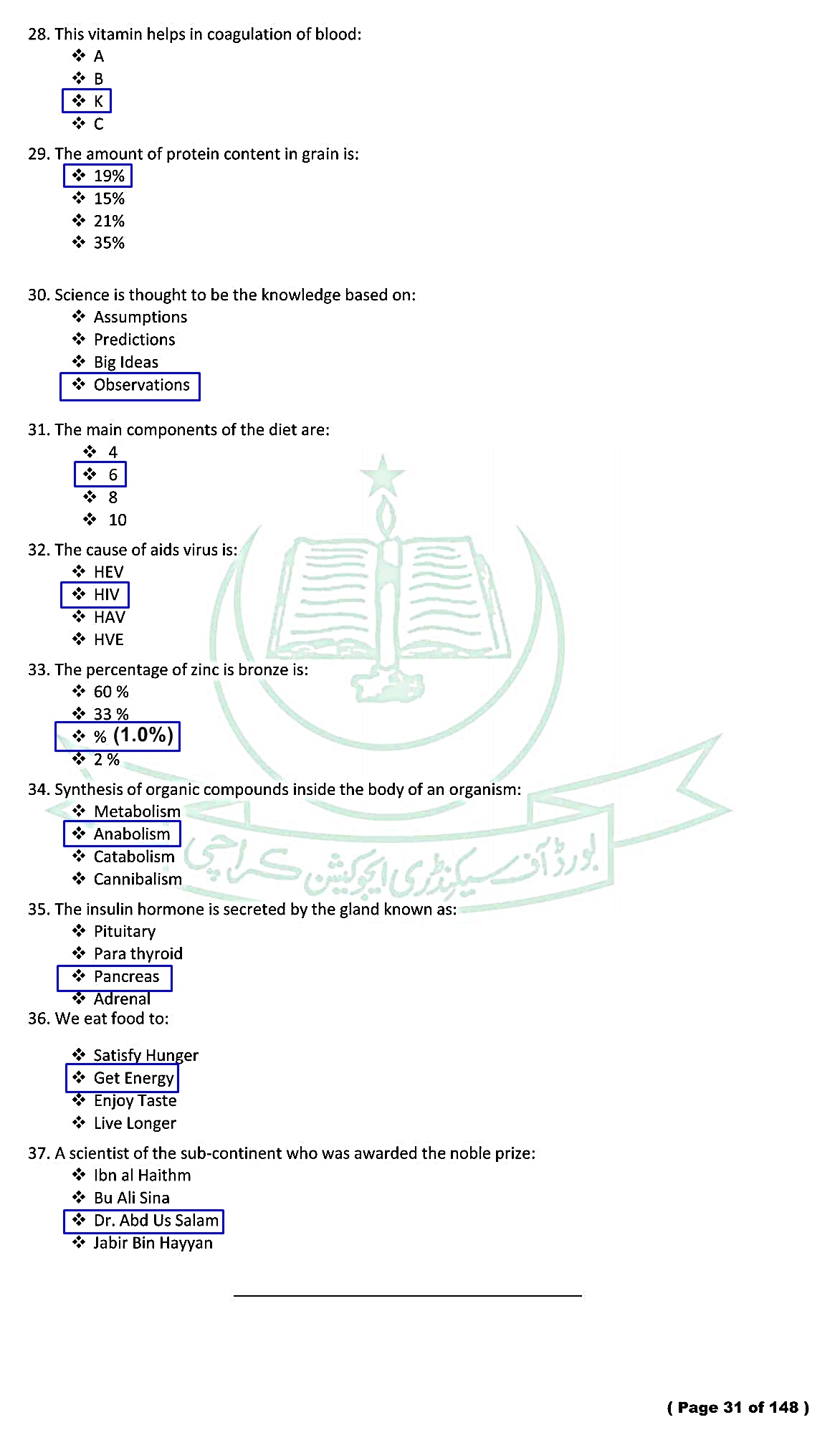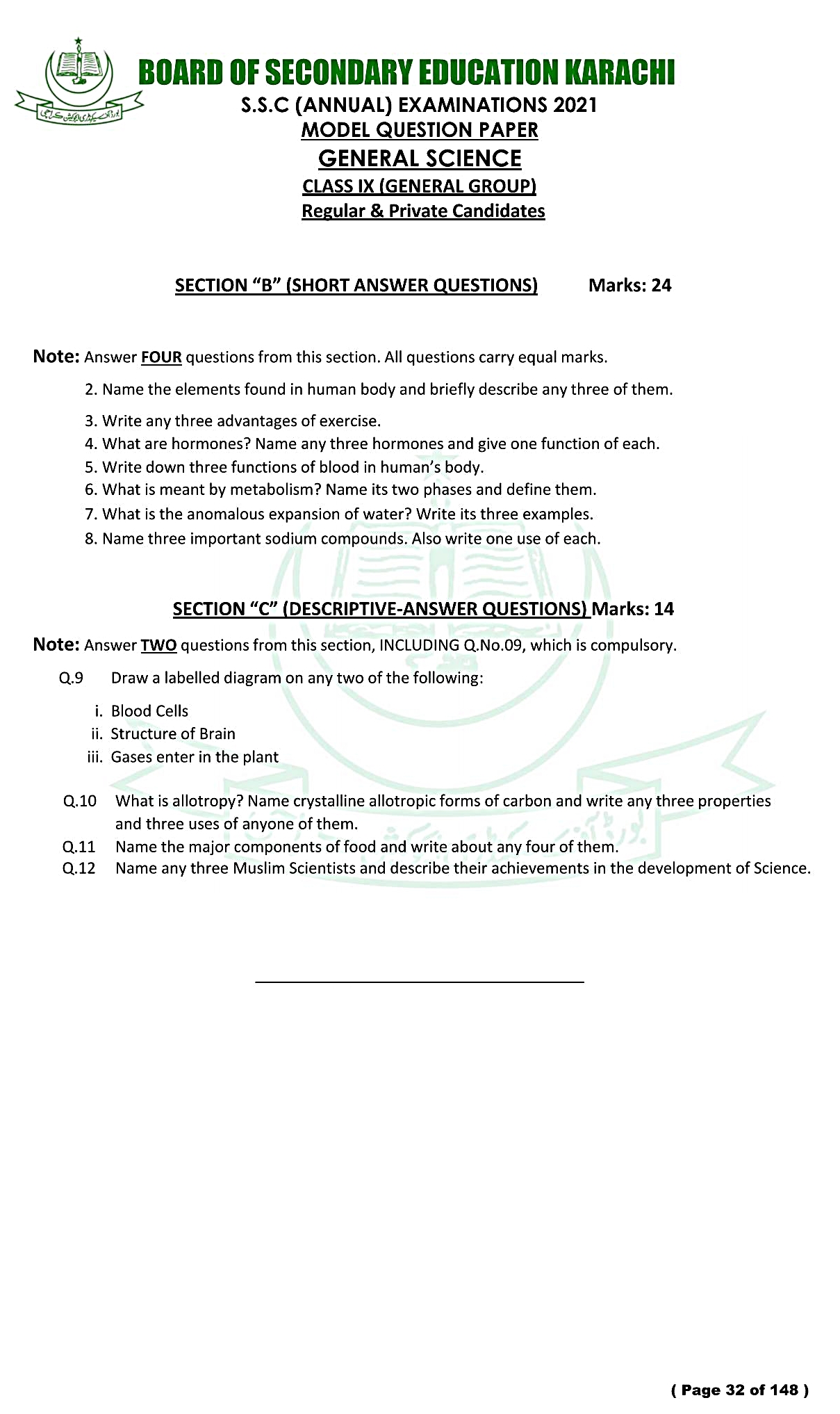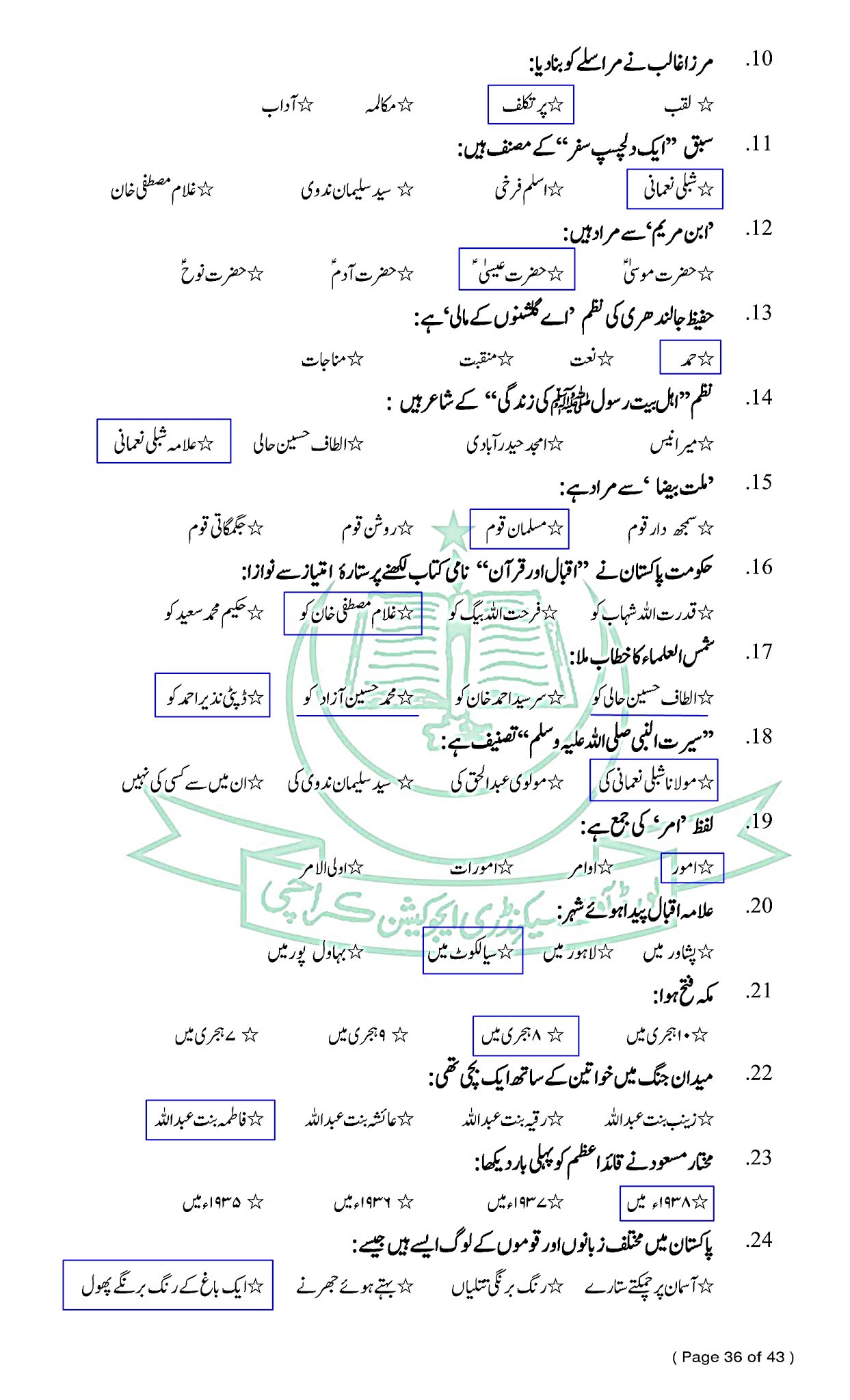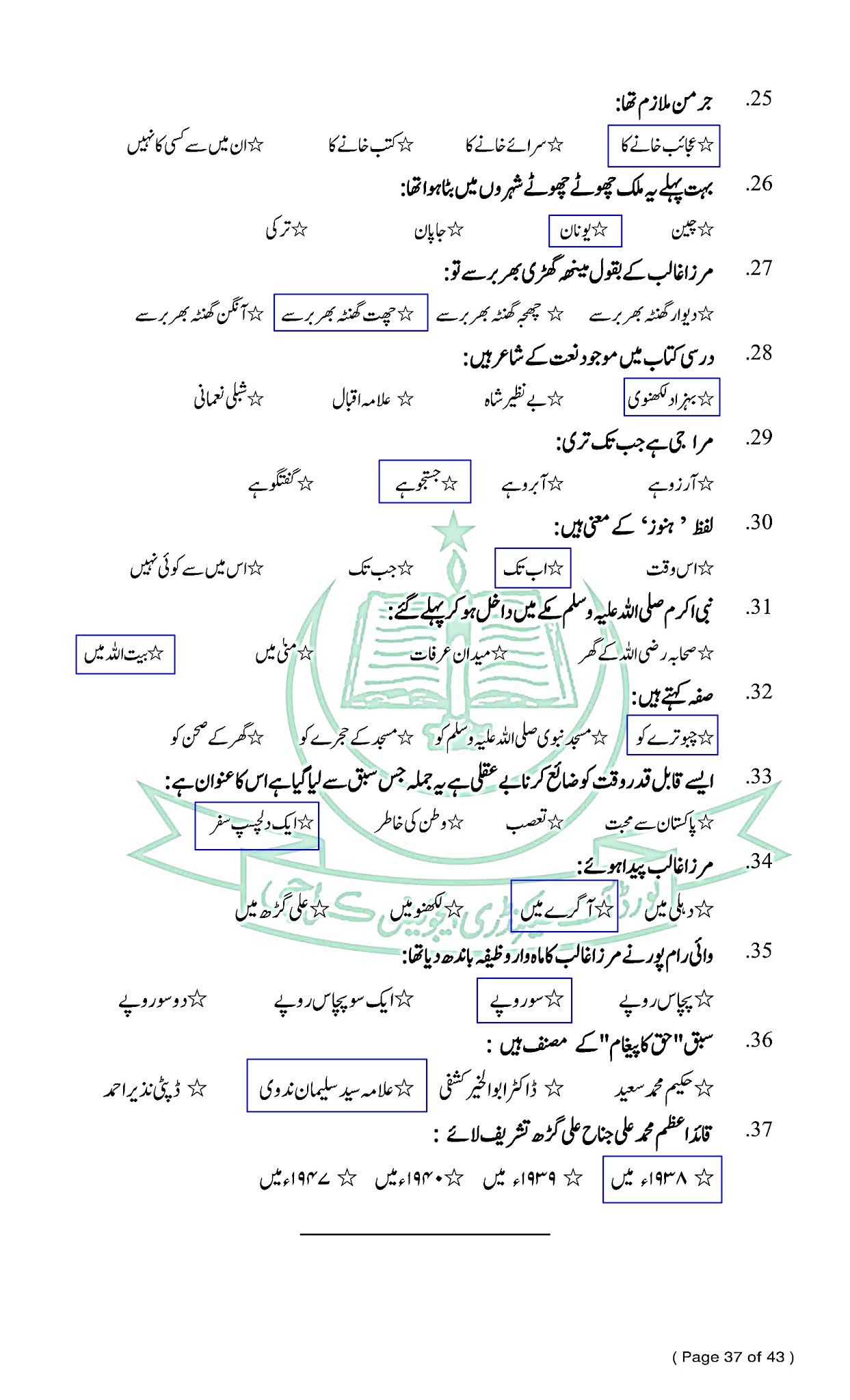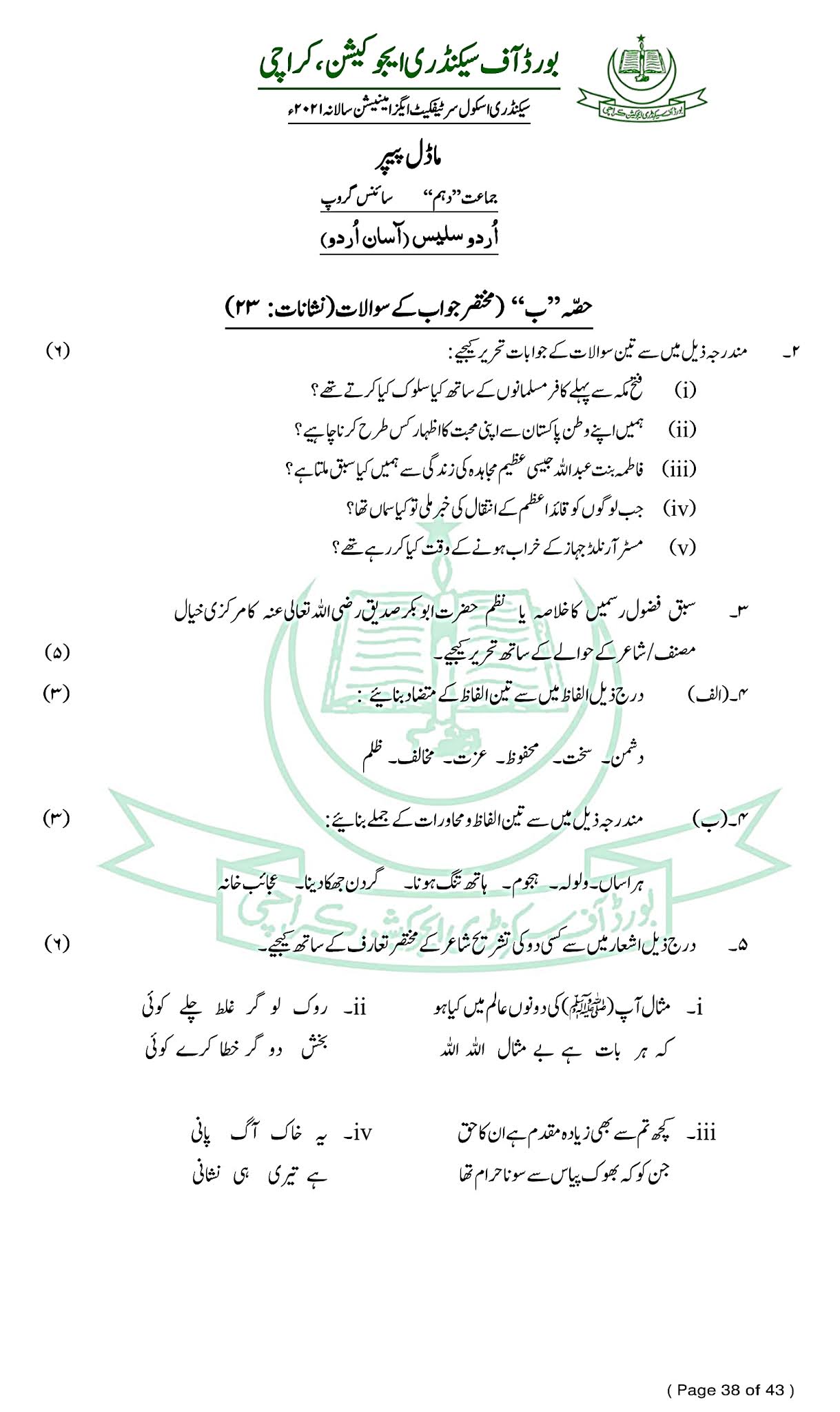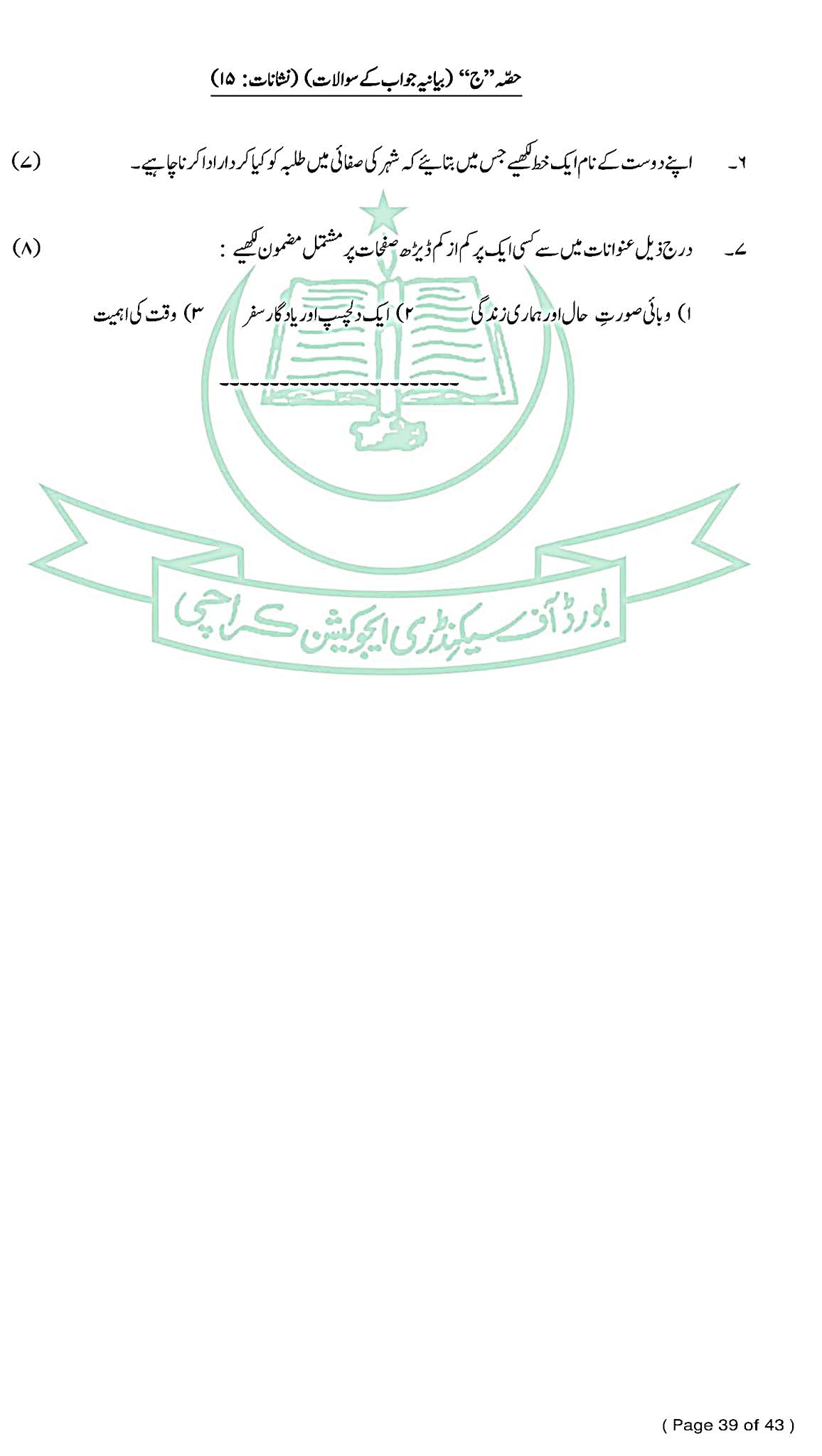GO TO INDEX
CHAPTER 5
CELL CYCLE
Review Questions From Text Book
1. Encircle the correct Answer:
1. Which processes involve mitosis?
(a) Growth, reduction division and asexual reproduction
(b) Growth, repair and asexual reproduction ✓
(c) Growth, repair and semi conservative replication
(d) Growth, reduction division and repair
2. What occurs in metaphase of mitosis?
(a)
Chromosome line up on the equator of the cell ✓
(b) Chromatids reach the poles of the spindle
(c) Chromatids separate and move to opposite poles
(d) Chromosomes start to coil up and become visible
3. Select the mismatched:
(a) Anaphase 4 Chromatids move
(b) Prophase 4 Centriole move
(c) Telophase 4 Nuclear membrane disappear ✓
(d) Metaphase 4 Chromosome line up
4. Which process occurs during prophase of mitosis in an animal cell?
(a) Division of centromeres
(b) Formation of chromosomes ✓
(c) Replication of DNA
(d) Separation of centrioles
5. Sequence of physiological changes by which cell commit suicide.
(a) Apoptosis
(b) Necrosis
(c) Autophagy
(d) Both "a" and "c" ✓
6. Choose the Incorrect statement regarding meiosis.
(a) Maintain chromosome number from generation to generation
(b) Reduces the diploid number of chromosomes to half
(c) Takes place in germ cell to produce gametes
(d) Production of new somatic cells from germ cells ✓
7. A type of cell division in which spore mother cell produce spores
(a) Amitosis
(b) Mitosis
(c) Meiosis ✓
(d) Both "a" and "c"
8. Stage of mitosis in which chromatids reach the poles and their movement ceases.
(a) Prophase
(b) Metaphase
(c) Anaphase
(d) Telophase ✓
9. Stage of meiosis in which centromeres shorten and the paired chromatids are pulled away from one another.
(a) Anaphase-II ✓
(b) Metaphase-II
(c) Telophase-Il
(d) Prophase-II
10. Phenomenon in which pair of homologous chromosomes fails to separate called:
(a) Non-disjunction ✓
(b) Terminalization
(c) Synapsisjo j
(d) Linkage
2. Fill in the blanks:
(i) Chromosomes are thread like structures appear at the time of
cell division.
(ii) Sequence of changes which occurs between one cell division and the next is called
cell cycle.
(iii) The two chromatids are attached to each other at
centromere.
(iv) Chromosomes in the cell which are similar to each other in shape and size are called
homologous pair.
(v) Chromosomes with one arm very small and other very long called
Acrocentric.
(vi) Chromosomes consist of two genetically identical copies of thread called
chromatids.
(vii) Period of extensive metabolic activity, in which cell grow, enzymes are synthesizes
G1 phase.
(viii) In animal meiosis produces
gametes.
(ix) During metaphase homologous chromosomes arrange themselves on the
equator of the spindle.
(x) Cell death which is caused by external factor called
necrosis.
3. Define the following terms:- Pachytene
- Cytokinesis
- Bivalent
- Chaismata
- Chromatids
- Diakinesis
- Terminalization
- Necrosis
- Crossing over
- Centromere
Ans:
i. Pachytene:-
It is the third sub-stage of Propahse I of meiosis I, followed by Zygotene.
-
The synaptic forces of attraction between each bivalent decrease and the chromosomes uncoil and separate.
-
The separation is however incomplete and paired chromosomes are in contact with each other at one or more points, called Chiasmata.
-
Each homologous chromosome split longitudinally except in the centromere region.
-
Now each bivalent is composed of four chromatids and therefore is known as bivalent tetrad.
ii. Cytokinesis:
The division of cytoplasm is called cytokinesis. It continues with the last stage of nucleus division in mitosis and meiosis. Soon the cytoplasm of the cell also divides and two daughter cells are formed. Thus telophase may or may not be accompanied by cytokinesis and daughter cell formation.
OR
Cytokinesis is the part of the cell division process during which the cytoplasm of a single eukaryotic cell divides into two daughter cells. Cytoplasmic division begins during or after the last stage of nuclear division in mitosis and meiosis.
iii. Bivalent:
During second sub-stage i.e Zygotene of prophase I of meiosis I, the Homologous (Similar structure) chromosomes, which comes from the mother (by ovum) and father (by sperm) are attracted towards each other and their lengthwise pairing takes place. The pairing of homologous chromosomes is known as synapsis, while the paired homologous chromosomes are known as bivalent.
OR
During prophase I of meiosis I, homologous chromosomes pair and from synapses. The paired chromosomes are called bivalents. The bivalent has two chromosomes and four chromatids, with the chromosome coming from each parents
iv. Chiasma:
In sub-stages of meiosis I, the synaptic forces of attraction between each bivalent decrease and the chromosomes uncoil and separate. The separation is however incomplete and paired chromosomes are in contact with each other at one or more points, called Chiasmata. The homologous chromosomes exchange their parts of chromatid at Chiasmata.
OR
A chiasma is the point of contact, the physical link, between two chromatids belonging to homologous chromosomes. At a given chiasma, an exchange of genetic material can occur between both chromatids.
v. Chromatids Or Sister Chromatids:In the beginning of cell-division each chromosome is consist of two genetically identical copies of thread attach with each other called chromatids or sister chromatids. They contain hereditary material called gene (DNA).
OR
A chromatid is one half of a duplicate chromosome. Before replication, one chromosome is composed of one DNA molecule. In replication, the DNA molecule is copied, and the two molecules are known as chromatids.
OR
Each of the two thread like strand into which a chromosome divides longitudinally during cell division is called chromatid. Each contains a double helix of DNA.
vi. Diakinesis:- It is the final sub-stage of Propahse I of meiosis I, followed by diplotene.
-
During this sub stage; nucleoli and nuclear membrane are disappeared, whereas Mitotic Apparatus (spindle) is completed.
-
Chiasmata moves from the centromere towards the ends of the chromosomes like a zipper. This type of movement of chiasmata is known as Terminalization.
-
At the end of Diakinesis chromatids still remain compacted at their ends.
vii. Terminalization:
During the Diakinesis, final sub-phase of prophase I of meiosis, Chiasmata moves from the centromere towards the ends of the chromosomes like a zipper. This type of movement of chiasmata is known as Terminalization.
viii. Necrosis:
The type of cell death which is caused by external factors i.e infection, toxin and tumor i.e accidental cell death, is known as necrosis.
ix. Crossing Over:
The homologous chromosomes exchange their parts of chromatid at Chiasmata. This exchange of segments of chromatids at chiasmata between the homologous chromosomes is called Crossing Over.
x. Centromere:
The region or point in which the chromatids are linked together are called centromere. The centromere is the specialized DNA sequence of a chromosome that links a pair of sister chromatids (a dyad). During mitosis, spindle fibers attach to the centromere via the kinetochore. Centromeres were first thought to be genetic loci that direct the behavior of chromosomes.
4. Distinguish between the following in tabulated form:
- Prophase and Prophase-I
- Prophase and Telophase
- Apoptosis and Necrosis
Ans: i.
Difference between Prophase and Prophase I
| S.No. |
Prophase |
Prophase I |
|---|
| 1. | It is a phase of mitosis. | It Is a phase of meiosis. |
| 2. | It is a short phase and occurs only once and is not divided in any sub-phase. | It Is a long phase and is divided into the sub phases. |
| 3. | Pair formation (synapsis) in between homologous chromosomes does not occur as there is no attraction between them. | Pair formation (synapsis) due to attraction occurs in between homologous chromosomes. |
| 4. | Chiasma is not formed. | Chiasma is formed. |
| 5. | Crossing over does not occur. | Crossing over occurs. |
| 6. | Part exchange does not occur in the chromosome. So gene arrangement remains unchanged. | Part exchange occurs, which changes the gene arrangement of the chromosomes. |
Difference between Prophase and Teloohase
| S.No. |
Prophase |
Telophase |
|---|
| 1. | Prophase is the first stage of karyokinesis during mitosis | Telophase is the final stage of karyokinesis during meiosis and mitosis |
| 2. | In prophase the chromatin condenses to form the chromosomes | In telophase the daughter chromosomes enlongate and overlap each other to form chromatin. |
| 3. | Spindle fibres appear around the poles. | Spindle fibres disappear around the poles. |
| 4. | Nuclear envelope and nucleolus degenerate (disappear) completely. | Nuclear envelope and nucleoli reappear and two daughter nuclei are formed. |
| 5. | Cell organelles disorganized and there is no difference between the cytoplasm and nucleoplasm. | Cell organelles are reformed and nucleoplasm appears in chromatin making it distinct from other cytoplasmic area. |
| 6. | In prophase the nuclear content is not initiated to be distributed. | In telophase the nuclear content get equally distributed to become the part of daughter cells. |
| 7. | The viscosity of cytoplasm increases. | The viscosity of cytoplasm decreases. |
Difference between Apoptosis and Necrosis
| S.No. |
Apoptosis |
Necrosis |
|---|
| 1. | Apoptosis is a programmed cell death | Necrosis is the premature death of cells. |
| 2. | It is always natural. | It is pathological and is caused by factors external to the cell or tissue, such as infection, toxins or trauma. |
| 3. | It is genetically controlled. | It is not genetically controlled. |
| 4. | It is highly time regulated event. | It is an unregulated event. |
| 5. | They do not require any treatment. | They always require proper treatment. |
| 6. | It is usually beneficial to the organism. | They are determinal to the organism. |
| 7. | Nucleus gets fragmented | Nucleus gets disorganized |
| 8. | Chromatin condensation is a hallmark of apoptosis. | No chromatin condensation occurs |
5. Write short answers of following questions:
(i) Why meiosis-I is called reduction division?
Ans: Meiosis is called reduction division because it reduces the number of chromosomes from diploid to haploid i.e. it gets reduced from 2N to IN (e.g. 46 to 23 chromosomes in human being) so as to maintain the species specific number 46 chromosomes(23 pairs) from generation to generation.
(ii) Why mitosis is necessary for growth?
Ans: Mitosis is a way of making more cells that are genetically the same as the parent cell. It plays an important part in the development of embryos, and it is important for the growth and development of our bodies as well. Mitosis produces new cells, and replaces cells that are old; lost or damaged.
OR
Mitosis is necessary for growth as it is responsible for development and growth of organisms by increasing number of exact copies of cells. It enables the organisms to grow from a single cell to a complex multicellular organism. Cell replacement is also done by mitosis.
(iii) How number of chromosomes remains constant from generation to generation?
Ans:
Constant number of chromosomes:
Meiosis maintains chromosome number constant from generation to generation. It is due to the fact that meiosis reduces the diploid number
of chromosomes to half i.e. haploid in the gametes. During fertilization the diploid number of the chromosomes is restored. e.g. There are 23 pairs of chromosomes in human cell which remain constant.
(iv) Why interphase is called as phase of high metabolic activities?
Ans: Interphase is the phase of the cell cycle. It includes sub-stages the G
1 (the cell grows), S (replicates its DNA) and G
2 (prepares for mitosis). G
1 the sub-phase of interphase is called as phase of high metabolic activities because it is the period of extensive metabolic activity, in which:
Cell grows in size, specific enzymes are synthesized and DNA base units are accumulated for the DNA synthesis.
(v) Why interphase between meiosis-I and meiosis-II is short?
Ans: Interphase is a short period of interphase before meiosis II, if it occurs.
Interphase is a stage associated with replication of DNA, and growth. Once meiosis II starts, the purpose is to produce a haploid gamete. So there is no further need of replication or growth. Hence between meiosis I and meiosis II, interphase is short.
6. Write detailed answers of the following questions:
(i) Describe various stages of mitosis with suitable diagrams.
Ans:
MITOSIS:
In this type of cell division a parent cell divides into two daughter cells in a way that the number of chromosomes in the daughter cells remains the same as in the parent cell. i.e. diploid mother cell producing diploid somatic (daughter) cell.
Phases Of Mitosis:
Although mitosis is a continuous process, but for the study point of view we can divide it into two phases
-
(a) Karyokinesis - nuclear division
-
(b) Cytokinesis - cytoplasmic division
(a) The karyokinesis:
It can be divided further for convenience into four phases which are:
-
Prophase
-
Metaphase
-
Anaphase and
-
Telophase
1. Prophase:-
During early prophase chromatin material condenses and become visible as thick coiled, thread like structures called chromosomes.
-
Each chromosome at this stage is already double, consists of two chromatids.
-
The chromatids are attached to each other at centromere.
-
The nuclear membrane and nucleolus gradually disappears.
-
At the same time centrosome divides to form two centrioles, each moves towards the opposite pole of the animal cell and forms the star shaped aster and spindle fibres.
-
In plant cells, the centrioles and asters are absent.
Metaphase:-
During this phase each chromosome arranges itself on the equator of the spindle and becomes more visible.
-
Each chromosome is attached to separate spindle fibre by its centromere, from each pole..
Anaphase:-
In this phase the spindle fibre contract.
- Centromere of a chromosome divides and the chromatids of each chromosome separates from each other and begin to move towards the other poles.
-
In this way one set of the chromatids (each chromatid is now an independent chromosome) move towards one pole while the other set towards the other pole.
Telophase:-
This is a stage when the chromatids (now called chromosomes) reach at the respective poles and their movement ceases.
-
Each pole receives the same number of chromosomes.
-
The nuclear membrane is reformed around each set of chromosomes.
- Nucleolus also reappears.
-
In this way two daughter nuclei formed in each cell. Each daughter nucleus has the same number of chromosomes as were present in the parent cell.
(b) Cytokinesis:- The division of cytoplasm is called cytokinesis. It continues with the last stage of nucleus division.
- Soon the cytoplasm of the cell also divides and two daughter cells are formed.
-
Events In Animal Cell:
* In animal cell cytokinesis takes place by developing a constriction in the middle between the two nuclei.
* This constriction become deep to divide cytoplasm in two equal halves.
* As a result two daughter cells are formed. -
Events In Plant Cell:
* In plant cells cytokinesis occurs by developing cell plate (cell wall) in the center of the cell (equatorial region).
* This wall extends towards the periphery of the cell and finally completes the formation of two daughter cells. -
In this way the daughter cells become the exact copies of their parent cell.
(ii) Describe stages of meiosis-I with suitable diagrams.
Ans:
Meiosis I (First Meiotic Division)
First meiotic division is the reduction division during which the chromosomes number is reduced to half. Meiosis I consists of:
-
Prophase I
-
Metaphase I
-
Anaphase I and
-
Telophase I
Prophase I:
It consists of the longest phase of meiosis. It can be subdivided into following sub stages:
-
Leptotene
-
Zygotene
-
Pachytene
-
Diplotene
-
Diakinesis
1. Leptotene:
During this sub stage following changes occur;
-
The chromatin network break into specific number of long thin beaded thread called leptotene.
-
Each thread has two morphologically similar leptene in each cell called homologous structure.
2. Zygotene:-
During this sub stage the Homologous (Similar structure) chromosomes, which comes from the mother (by ovum) and father (by sperm) are attracted towards each other and their lengthwise pairing takes place.
-
The pairing of homologous chromosomes is known as synapsis, while the paired homologous chromosomes are known as bivalent.
3. Pachytene:-
The synaptic forces of attraction between each bivalent decrease and the chromosomes uncoil and separate.
-
The separation is however incomplete and paired chromosomes are in contact with each other at one or more points, called Chiasmata.
-
Each homologous chromosome split longitudinally except in the centromere region.
-
Now each bivalent is composed of four chromatids and therefore is known as bivalent tetrad.
4. Diplotene:-
The homologous chromosomes exchange their parts of chromatid at Chiasmata.
-
This exchange of segments of chromatids at chiasmata between the homologous chromosomes is called Crossing Over.
5. Diakinesis:-
During this sub stage; nucleoli and nuclear membrane are disappeared, whereas Mitotic Apparatus (spindle) is completed.
-
Chiasmata moves from the centromere towards the ends of the chromosomes like a zipper.
-
This type of movement of chiasmata is known as Terminalization.
-
At the end of Diakinesis chromatids still remain compacted at their ends.
(Note: Below Diagram is only for explanation)👇
Metaphase I:
Following changes occur in this phase:
-
The bivalent line up at the equatorial plane.
-
The centromere of each chromosome attaches with same fibres of spindle.
Anaphase I:-
At this stage one chromosome from each member of homologous pair (bivalent) begins to separate and move towards its respective pole by the contraction of spindle fibers.
-
The actual reduction occurs at this stage because half the number of chromosomes moves to each pole.
-
Moreover as a result of crossing over the two chromatids of a chromosome do not resemble with each other in the genetic terms.
Telophase I:-
The nuclear membrane form around the chromosomes at each pole and chromosomes become uncoil.
-
The nucleolus reappears and thus two daughter nuclei formed.
Cytokinesis:
Telophase may or may not be accompanied by cytokinesis and daughter cells formation.
STAGES OR PHASES OF Meiosis I (First Meiotic Division)
OR
(Note: Below Diagram is only for explanation)👇
SHORT QUESTION & ANSWERS
Q.1: Name types of chromosomes?
Ans:
Types Of Chromosomes:
The chromosomes are of different types, depending upon position of centromere. These types are:
- Metacentric: Chromosomes with equal arms.
- Sub-meta centric: Chromosomes with un equal arms.
- Acrocentric or sub-telocentric: Rod like chromosomes with one arm very small and other very long. The centromere is subterminal.
- Telocentric: Location of centromere at the end of chromosomes.
Q.2: What is the difference between mitosis and meiosis?
Ans:
Difference Between Mitosis And Meiosis:
| S.No |
Mitosis |
Meiosis |
|---|
| 1. | Mitosis occurs in asexual reproduction. | Meiosis occurs in sexual reproduction. |
| It takes place in Somatic Cells | It takes place in Germ Cells |
| 2. | Result in 2 daughter cells are formed, which are genetically identical | Result in 4 daughter cells are formed, which are genetically different. |
| 3. | It involves one cell division. | It involves two successive cell divisions. meiosis I (reduction) and meiosis II (simple mitosis). |
| 4. | No Pairing of Homologous / no synapsis / no bivalent formation | Paring of homologous / synapsis / bivalent formation. |
| 5. | No recombination or crossing occur. | Recombination or crossing over occur. |
| 6. | Number of chromosomes remains the same | Number of chromosomes reduced to half |
| 7. | Chiasmata absent | chiasmata formed during prophase I. |
| 8. | Mother Cells can be either haploid or diploid | Mother Cells always diploid |
| 9. | It takes part in cellular reproduction, general growth, repair of the body, healing and repair Genetic | It takes part in the formation of gametes and maintains chromosome number from generation to generation. |
| 10. | Prophase stage is short | prophase stage is longer in meiosis I. |
